- 1.1 Climate
- 1.2 Terrain
- 1.3 History
- 1.4 Culture
- 1.5 Holidays
- 1.6 Visitor information
- 4 Other destinations
- 5.1 Visa requirements
- 5.2 By plane
- 5.3 By road
- 10.2 Shopping
- 16 Stay safe
- 17 Stay healthy
Haiti ( Haitian Creole : Ayiti , French : Haïti ) is a Caribbean country on the western half of the island of Hispaniola . The poorest country in the Western Hemisphere, the country suffers from a myriad of social, economic, and political problems and since the 1950s, it has been in the news for all the wrong reasons. However, for those with patience and an open mind, Haiti reveals a rich culture that is unique among post-colonial nations. This is the only country in the world that was established by a successful slave revolt, the first country in the Americas to abolish slavery, and all of the country's first leaders were former slaves. Haiti has a sizeable diaspora around the world, and many influential figures like W. E. B. Du Bois, Jean Baptiste Point du Sable (the founder of Chicago ) and former Canadian Governor-General Michaëlle Jean were of Haitian origin.

Understand [ edit ]
It is extremely helpful when traveling in Haiti to have a local contact, through a church, a hotel, or just through making friends with someone. Experiences like dining locally, riding on a tap-tap, or strolling through one of the insanely crowded outdoor markets are great fun and very worth doing but are much safer and easier if you have a trusted Haitian to go along as a guide and interpreter.
Much of Haiti is struggling. It is the poorest country in the Western hemisphere, long beset by government corruption, and now imperiled by violent criminal gangs. The north coast of Haiti was lashed by Hurricane Irma in 2017, and in 2016, Hurricane Matthew wreaked havoc on large parts of Haiti, leaving behind more than 1,000 dead and destroying homes and infrastructure, including tourist areas and healthcare facilities, on a large scale. Before that, the earthquake in 2010 damaged buildings.
Climate [ edit ]
Tropical and semiarid where mountains in the east cut off trade winds, Haiti lies in the middle of the hurricane belt and is subject to severe storms from June to November. Experiences occasional flooding, earthquakes and droughts.
When traveling to Haiti it is very important that you bring a first aid kit. Be sure to include a lighter, flashlight (due to Haiti’s constant power outages), an antacid such as Pepto-Bismol (Bismuth subsalicylate), instant ice packs, an analgesic such as ibuprofen (known for example as Motrin), and paracetamol, water purifying tablets (just in case), bug spray, sunscreen, antihistamine (Benadryl), etc. Be sure to not drink the water or any drinks made with the water unless you are on an American-run base with guaranteed purified water.
Terrain [ edit ]
Mostly mountainous, with a wide, flat central plain to the north. The highest point is Chaine de la Selle at 2,777 m (9,111 ft).
History [ edit ]
Haiti was inhabited by the native Taino Indians when Christopher Columbus landed on December 5, 1492 at Mole St Nicolas; see Voyages of Columbus . Columbus named the island Hispaniola. The Taino were a branch of the Arawak Indians, a peaceful tribe that was weakened by frequent violent invasions by the supposedly cannibalistic Carib Indians. Later, Spanish settlers brought smallpox and other European diseases to which the Taino had no immunity. In short order, the native Taino were virtually annihilated. There is no visible trace of Taino blood on Haiti today, and the vast majority of Haitians are descendants of enslaved Africans; however, genetic studies have shown that both European and Taino admixtures are more common than often believed.

In the early 17th century, the French established a presence on Hispaniola and in 1697 Spain ceded the western third of the island to France. Through the development of sugar and coffee plantations, the French colony of Saint-Domingue flourished, becoming one of the wealthiest in the Caribbean. Enslaved Africans were brought to Haiti to work on these French plantations. Work conditions for slaves on Haiti were the harshest imaginable, as sugar and coffee plantations required intensive labor. The French imported an enormous slave labor force, which ultimately vastly outnumbered the French planters 10 to 1. Even within the minority of free people in the colony there were major divisions, between the "petit blancs" (small whites) who did not own slaves and worked in trades or as overseers, the "grand blancs" (big whites) who owned slaves and plantations and the "free coloreds" who were descendants of slaves and whites and occupied all strata of free society from wealthy landowner to poor day-laborer. The whites, who were largely born off the island and only came to Saint Domingue to make a fortune instituted a racist caste system designed to deny the "free coloreds" the relatively powerful position they had gained by the mid 18th century. However, all those inherent tensions (and the overriding tension of slavery) came to a head when the French Revolution broke out in the metropole in 1789 and all this talk of "freedom" and "equality" meant that everybody - including the big whites - wanted to overthrow the colonial order up to that point, ultimately resulting in a slave uprising and the collapse of the whole slavery and plantation based society.
In August 1791, Saint-Domingue's nearly 500,000 slaves revolted, triggering an almost continuous civil war in which the inherent tensions between the various groups of Haitian society erupted. After a bloody 13-year struggle, that was influenced and in turn influenced the Napoleonic Wars as well as the American War of 1812, the former slaves ousted the French and created Haiti, the first black republic, in 1804. Unfortunately, one of independent Haiti's first leaders, Jean Jacques Dessalines, who proclaimed himself Emperor Jacques I perpetrated a massacre against the remaining white Haitians, killing almost all of them and driving most of the rest into exile. Jacques I was assassinated two years later by his own officers and replaced by Henri Christophe (King Henri I of Haiti), setting the precedent for a lot of violent transfers of power, which however usually ended with death not exile of the losing side. Haiti was hampered by the ravages of the wars, as well as a lack of major trading partners which was further complicated by the refusal of any major power to acknowledge Haitian independence. France only accepted independence in the 1820s after Jean Pierre Boyer agreed to pay a 150 million francs indemnity to France in exchange for recognition of independence - a major source of Haiti's crushing debt and a sum France has duly collected most of and never so much as apologized for. The United States, itself a slave holding nation, did not officially recognize Haiti until the Civil War eliminated Southern resistance in the Senate to such a move - six decades after Haiti had thrown off the colonial yoke.
A lack of government and civil unrest led to the American occupation of Haiti from 1915 to 1934. While order was brought about and much infrastructure was developed in Haiti by the United States, Haitians resented the occupation of their country. The withdrawal of Americans by President Roosevelt in 1934 left a power vacuum that was filled by Haitian military elite. The Forbes Commission in 1930 accurately noted that "the social forces that created [instability] still remain — poverty, ignorance, and the lack of a tradition or desire for orderly free government."
The following 20 years saw ruthless struggles for power that ended with the ascension of François (Papa Doc) Duvalier. Duvalier's brutal dictatorship lasted nearly thirty years, with his son, Jean-Claude (Bébé Doc) Duvalier assuming power after Papa Doc's death in 1971. During the Duvalier dynasty, Papa Doc’s secret police known as the Tonton Macoute rose to power and committed mass atrocities across Haiti until Bébé Doc was ousted in 1986, followed by more bloodshed and military rule that culminated in a new Constitution in 1987 and the election of former priest Jean-Bertrand Aristide as president in 1990.
After a coup, Aristide went into exile. Most of his term was usurped by a military takeover, but he returned to office in 1994 after Haitian General Raoul Cedras asked the United States to intervene, negotiating the departure of Haiti's military leaders and paving the way for the return of Aristide. His former prime minister, René Préval, became president in 1996. Aristide won a second term as president in 2000, and took office early in 2001. However, accusations of corruption were followed by a paramilitary coup that ousted Aristide in 2004. Since then, Haiti has been occupied by U.N. peacekeeping troops (MINUSTAH), mostly from Brazil.
Culture [ edit ]

The New World Afro-Diasporic customs of Vodou are widely practiced in Haiti and mixed with Catholicism. Vodou (also spelled Voodoo, et al.) arises from Yoruba religion from Nigeria , plus elements of indigenous Taino culture.
Holidays [ edit ]
- January 1: New Year's Day and Independence Day
- January 2: Ancestry Day
- May 18: Flag and Universities Day
- August 15: Assumption
- October 17: Anniversary of the Death of Dessalines
- December 5: Discovery Day
- December 25: Christmas
Visitor information [ edit ]
- Visit Haiti website
Regions [ edit ]
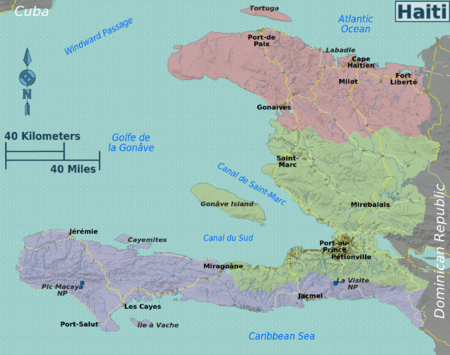
Cities [ edit ]
- 18.5425 -72.338611 1 Port-au-Prince — Haiti's big, crowded, and chaotic capital city.
- 19.75 -72.2 2 Cap-Haïtien — the country's second biggest city, on the Atlantic coast near some beautiful beaches and interesting old forts.
- 18.234167 -72.534722 4 Jacmel — a relaxed town with a beautiful historic center and a claim not easily dismissed to be the country's artistic and cultural capital, albeit in ruins following the earthquake.
- 18.647222 -74.113889 5 Jérémie — Haiti's westernmost and profoundly isolated town is a sleepy little charming place.
- 18.2 -73.75 6 Les Cayes — Southern Haiti's principal port and a popular jumping off point for Île à Vache .
- 18.509831 -72.285553 7 Petionville — a wealthy and much safer suburb of Port-au-Prince, where you will find most of the capital's nightlife, restaurants, wealthy Haitians, and foreigners.
- 18.093908 -73.925694 9 Port-Salut — President Aristide's birthplace, home to miles of gorgeous, empty white sand beaches.
Other destinations [ edit ]

- The Citadelle Henri Christophe (also known as Citadelle Laferrière) is a fortress located on a high mountain in Haiti overlooking the city of Milot, Haiti. At the base of the mountain stands the ruins of Palais Sans Souci.
- 19.786389 -72.245556 1 Labadie - a private port used by cruise ships .
- The 27 historic vestiges of Mole Saint Nicolas, North West, a strategic bay at the enter of Canal du Vent, also called Gibraltar of America. Good site for sports too (wind surf, kite surf, mountain bike, hiking, etc.).
Get in [ edit ]
Visa requirements [ edit ].
Haiti has open borders, which means that citizens of most countries can enter the country without a visa. The government is keen on improving Haiti's global image and is actively promoting the tourist industry.
Visa-free privileges are not extended to citizens Colombia , Cuba , Dominican Republic , Iran , Libya , Panama , Syria , Vietnam and Yemen , however.
By plane [ edit ]
International travelers will arrive in Haiti at Port-au-Prince ( PAP IATA ) at the Aéroport Toussaint L'Ouverture Airport or Aéroport International Cap-Haïtien ( CAP IATA ) in the North. The plane tickets can be purchased via many online ticketing sites and agencies. There are intra-Haiti flights available as well. Prices on these flights can fluctuate from time to time due to inflation but, depending on the airline, are usually between $125-$132 return from and to Port-au-Prince, cheaper between Port-au-Prince and Jacmel. A really cheap, dependable and popular airline is Sunrise Airways . In addition to avoiding rather dangerous and inadequate public transportation system by bus and tap-taps, flights offer a safe passage into and out of Port-au-Prince from other parts in Haiti.
Airlines such as American Airlines, JetBlue, and Spirit serve Port-au-Prince from the US. Air Transat, Air France, Caribair, and among others, also offer international flights to and from Port-au-Prince.
MFI (Missionary Flights International) fly to Cap also from Florida, but only registered non-Catholic Christian missionaries are welcome aboard. Other international airlines serving Cap-Haïtien include Sky King, Turks and Caicos Air and Pine-apple Air.
By road [ edit ]

From Santo Domingo, Caribe Tours runs a once-daily bus to Petionville (in the hills above Port-au-Prince) that leaves at 11AM. A ticket costs $40 one-way, $26 USD tax and 100 DR. Unfortunately, this bus drops you off in Petionville after dark so make prior arrangements with a trustworthy person to meet you and transport you to your lodging.
There is also a crowded border crossing between Dominican Republic and Haiti in Dajabón/Ouanaminthe. The border is open only during the day. From here you can catch local transport to Cap-Haïtien.
Another, less expensive, option from Santo Domingo to Port-au-Prince, is to take a gua-gua (Dominican minibus) from Santo Domingo (departing a few blocks north of Parque Enriquillo) for 380 DR pesos (about $10, 5 h) and arrive in the border town of Jimani. From there, it is a 4 km walk or a 50 DR pesos ride by motoconcho to the border post.
The border is apparently open 09:00-18:00 (but don't rely those times). It is very easy to cross the border without submitting to any immigration procedures on either side, and although it would probably be illegal, it saves a few dozen dollars on bribes and is much faster too. Apart from entering the DR when a soldier takes a look at the passport, nobody does any inspection: immigration or customs. Entering Haiti legally is quick: fill out the green form and pay whatever amount the official asks (around 100 DR). There are no ATMs at the border.
Moneychangers give gourdes for DR pesos and US dollars. Rates are fair. There is plenty of local transportation from the border to Port-au-Prince. Crowded tap-taps and buses can take you to Croix-des-Bouquets for 50 gourdes (1.5-2 h), from where it is another hour to Port-au-Prince proper (bus, 5 gourdes). The road has variable conditions and is prone to flooding. Peruvian UN soldiers at the border have confirmed that the road to Port-au-Prince is safe to travel with no incidents of robbery or kidnappings, but definitely try to arrive in Port-au-Prince before dark.
Get around [ edit ]
By car [ edit ].
Cars may be rented through Hertz, Avis, etc. Taxis in Haiti are usually in the form of SUVs or trucks, as most of the roads are long overdue for repairs, in addition to plethora of unpaved roads one faces while travelling in Haiti. The price is often fair ( i.e., 450 gourdes, or $11.53 at 39 gourdes to a dollar, from Port-au-Prince to Léogâne), but offers safety and comfort that cannot be found in riding tap-taps or buses.
By bus [ edit ]

"Tap-taps" are the most economical way to travel in Haiti. Haitian tap-taps are modified trucks or vans and are ubiquitous throughout Haiti. A raised wooden canopy-like cabin usually sits over the truck bed while wood benches are attached to the bed and serve as seats. Tap-taps are frequently painted bright colors, feature images of popular celebrities and elements featuring popular culture, and often bear a religious slogan, such as Jesus vous aime ("Jesus loves you").
In Port-au-Prince, most routes cost 10 gourdes ($0.25). They are also quite convenient as they will stop anywhere along the route: simply yell "merci!" to get the driver to stop. However, they are sometimes overpacked and can be quite dangerous to ride in the mountain roads where the road conditions are less than ideal. First time travellers who do not speak conversational Creole are advised not to travel by tap-tap without assistance. There are also school bus versions of tap-taps used for longer voyages. These are often modified school buses.
A more comfortable alternative for long distance travel are minibuses. These congregate at various lots throughout the city, organized by destination. Seats to Jacmel, for example, cost about 150 gourdes (30 Haitian dollars, $3.75), while the more comfortable front seat may go for 200 gourdes ($5).
Talk [ edit ]
The official languages of Haiti are French and Haitian Creole (Kreyòl Ayisien), which is a French-based creole language, with 92% of the vocabulary being derived from French and the rest primarily from African languages. Haitian Creole is the native language of the masses, while French is the administrative language, even though only 15 % of Haitians can speak it and only about 2% can speak it well.
Creole is mutually intelligible with French on the most basic level, so the competent French speaker should be fine in limited circumstances. Many Haitians are very appreciative if you take the trouble to learn a little bit of one of the official languages (preferably Creole), rather than using an interpreter or expecting them to speak English. Haitians working in tourist areas usually speak English well enough for conversation.
See [ edit ]
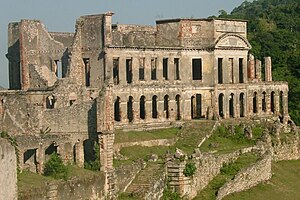
Port-Au-Prince has some landmarks, structures and statues, such as a large pair of hands holding the earth. Many of these are close to the airport. This city is the largest in Haiti and was the most affected by the earthquake. You will still see evidence of the disaster, such as crumbling buildings, but much reconstruction has taken place. When you go a short distance outside of the city, you will have a better idea of the devastation. There are still people living in the "tent village," which extends for about two miles and is made up of small tarps draped over sticks stuck in the ground. As you go on, you may pass one of the mass graves dug after the earthquake, but you probably will not realize it is a grave. It's on the side of a small mountain, and the grass has grown over the turned earth. There are no markings but you will sometimes see people there or flowers placed in memory.
Haiti has beautiful scenery if you know where to find it. If you are travelling or staying with someone who knows the area well, ask if there are any nice beaches or mountainous areas nearby. St. Marc, along with some other cities, has a beautiful mountain range that can be hiked. At the top of these mountains are some historical artifacts, structures and incredible views of the ocean.
The severe impact of earthquakes in 2010 left Haiti's economy in ruin. However, there are several erected memorials that invoke the memory to the thousands of victims who lost their lives during the man-made disaster.
Do [ edit ]
Champs-de-Mars was once the most beautiful park in Haiti but is now covered in tents housing people made homeless by the earthquake. It was a public place where people went to relax, before the quake. It is located near the National Palace.
Buy [ edit ]
Money [ edit ].
The Haitian gourde is the currency of Haiti, denoted by the symbol " G " (ISO code: HTG ). Although merchants are required to quote prices in gourdes by law, virtually everything is priced in "dollars" — not US but Haitian dollars, equivalent to 5 gourdes. This practice is a holdover from the US occupation of Haiti in the early 20th century, during which the gourde was pegged at G5 to the US dollar.
Coins of Haiti are issued in denominations of 5, 20 and 50 centimes, 1 and 5 gourdes. Banknotes of Haiti are issued in denominations of 10, 25, 50, 100, 250, 500 and 1,000 gourdes.
Shopping [ edit ]
Haiti has become famous for its very informal yet interesting bustling marketplace. Everything is sold here ranging from the curiously appealing to the dullest of objects for rather inexpensive prices. Haggling is both wise and recommended, as most Haitians will charge foreigners at least double the market rate. There are various large retail supermarkets in the capital that offer a variety of items at fixed prices. Haiti has a world of crafts waiting to be sought after.
Eat [ edit ]
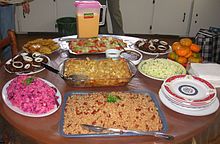
Haitian cuisine is typical of Caribbean métissage, a wonderful mix of French and African culinary traditions.. It is similar to its Spanish Caribbean neighbors yet unique in its strong presence of spices. Roast goat called 'kabrit', morsels of fried pork 'griot', poultry with a Creole sauce 'poulet creole', rice with wild mushroom 'du riz jonjon' are all wonderful and tasty dishes.
Along the coast fish, lobster and conch are readily available. Haiti has a very fine collection of fruit including guava, pineapple, mango (Haiti's most prized fruit), banana, melons, breadfruit, as well as mouth watering sugarcane cut and peeled to order on the streets. Restaurants in the bigger cities provide safe and delicious meals, and precautions are taken with the food and water to keep things safe.
However, even in resorts with purified water, it is not always safe to assume that raw vegetables (such as lettuce and tomatoes) have been properly washed. In smaller or more humble venues make sure to eat fruit and vegetables that can be skinned or peeled, drink bottled drinks only, make sure any ice is from a clean water source, and make sure any meat is well-cooked.
When bottled water or boiled water is not available, a freshly opened coconut provides water and electrolytes with minimal health risk.
Drink [ edit ]
Haitian rum is well-known. Barbancourt 5 star is a top drawer drink. Clairin is the local firewater made from sugarcane that can be bought on the street, often flavored with various herbs that can be seen stuffed into the bottle. Prestige is the national beer, and is of good quality and excellent taste. Also be sure to try the Papye drink, a sort of papaya milk shake that is deliciously refreshing beyond words on a hot day. Cremas is a tasty, creamy alcoholic beverage that is derived from coconut milk.
Sleep [ edit ]
There are many guest houses throughout Haiti. However, these are quite hard to find while overseas. Many of these guest houses run about 25 to 35 dollars a night and include 2 to 3 meals during the day. Sometimes these houses are associated with orphanages (such as Saint Joseph's Home for Boys).
- Saint Joseph's Home for Boys is in Delmas 91, near Petionville.
- Fondwa Guest House is at the bottom of the hill from Anbatonèl (a small village halfway between Léogâne and Jacmel).
Camping is a high-risk activity in certain parts of Haiti and is not recommended.
Learn [ edit ]
The educational system of Haiti is based on the French system. Higher education, under the responsibility of the Ministry of Education, is provided by universities and other public and private institutions. The higher education schools in Haiti include the University of Haiti. There are also medical schools and law schools offered at both the University of Haiti and abroad. Brown University is cooperating with L'Hôpital Saint-Damien in Haiti to coordinate a pediatric health care curriculum.
Work [ edit ]
Haiti's unemployment rate is one of the highest in the Western Hemisphere at over 14%.
Stay safe [ edit ]
Since the assassination of its president in 2021, Haiti has once again devolved into complete lawlessness. Several governments advise against all travel travel to Haiti. Violent crime and civil unrest are serious problems. Kidnapping is also a risk. In case of trouble, help from the outside world will be extremely limited.
Do not unnecessarily carry valuables or more cash than needed, or walk late at night in dark streets. Women should not walk alone. The number of people that fled the country after the 2010 earthquake is unknown, but the atmosphere has changed some people. Even when women walk with other men, Haitian men may still utter remarks. They are not afraid to maintain eye contact, and their stares may make one uneasy. It is best to be polite, but be engaged in your immediate group.
Stay healthy [ edit ]
Sanitary conditions in Haiti are poor and medical care is woefully inadequate. If you get ill or injured whilst in Haiti, you may need to leave or be evacuated.
Tap water should be avoided. Drink bottled water only. Washing oneself with water from places such as creeks or lakes is not recommended due to the risk of water-borne diseases. Several diseases can cause dehydration, as can sweating a lot because of the hot climate. Hydration requirements can be fulfilled by preparing one of the many water purifying systems as if one were going camping, or by buying bottled water once in Haiti; it is widely available and inexpensive by western standards.
Various mosquito-borne diseases are a concern in Haiti, and precautions against mosquitoes are strongly recommended. Malaria is common and most travellers will need anti-malarial drugs. Dengue fever is also fairly common. Zika fever is also a concern, especially for women who are or may become pregnant. Check with your doctor, a tropical medicine specialist, or a local hospital or clinic, preferably at least 6 weeks before your trip, to find out what immunizations and anti-malarial prophylaxis they would suggest. There is now an oral cholera vaccine which also gives partial immunity to various causes of travellers' diarrhea ; that may be a good idea for Haiti, although cholera does not typically affect tourists. The US government Center for Disease Control (CDC) has a page with advice for travellers to Haiti.
Depending on your itinerary, you may have to walk a lot. Comfortable footwear is crucial for avoiding blisters. Hiking boots are recommended as well as comfortable sandals.
Respect [ edit ]

One thing visitors to Haiti learn very quickly is that Haitians are a very friendly and down-to-earth people, despite all they have had to endure. There are some beggars and peddlars in the cities, but they are the exception, not the rule. Expect no kow-towing. Impoverished Haitians will always accept gifts, but they will almost always stand straight, look you in the eye, and repay you with a sincere "Mesi" ( thanks ).
Haiti is a nation of fairly conservative norms. Modest dress when exploring Haiti's cities is advised, especially for women. The smart visitor should look people in the eye, wave hello, and treat them with friendship and respect, as equals, no matter how poor or desperate their living conditions may seem.
Try to learn some basic words of Haitian Creole.
Ask permission before taking pictures of locals (they often ask you for money). Never walk about sticking your camera in people's faces or taking pictures randomly. Do not solely take pictures of the piles of trash you may see in some of the bigger cities (such as Cap-Haïtien or Port-au-Prince) or anything else that Haitians are not proud of as it is offensive. However, people have no problem with foreigners taking pictures of beautiful scenery, cultural events or historical sites.
Carry a few gourdes in your pockets for the kids who carry your luggage/shine your shoes/hail your tap-tap at the airport (but be alert for pickpockets).
Sometimes visitors to Haiti walk about handing out candy or dollar bills. While many people, especially children, will accept your offering, this is offensive to most people as it compromises the dignity of Haitians. Carry an extra water bottle and food to share with your driver, guide, or interpreter.
Be patient as nothing moves fast in Haiti. Most people will find your whining amusing at best and severely insulting at worst.
Carry a few photos of the area where you live, your workplace, or your family to share with friends you make. These are the things that transform you from just another tourist into a real person. More often than not, the people will return the favor, and you might just find a friend.
The people on the Gonâve Island have quite possibly less contact with Americans than say those Haitians in Port-au-Prince. The children shout "blan, blan, blan" as white people walk by. The children on the saline flats will readily walk with you, show you how to skip stones off the water and try very hard to communicate with you. They may try to charge you for picking up a shell from the flats and up to $6 to take a picture of their donkey. You do not have to pay, but out of respect, do not take the picture. They appreciate being asked if you may take their picture.
- Has custom banner
- Has warning box
- Has map markers
- Has VisaRestriction box
- All destination articles
- Outline countries
- Outline articles
- Country articles
- Has Geo parameter
- Pages with maps
Navigation menu
How to travel to Haiti (2024)
By Joan Torres 10 Comments Last updated on April 11, 2024
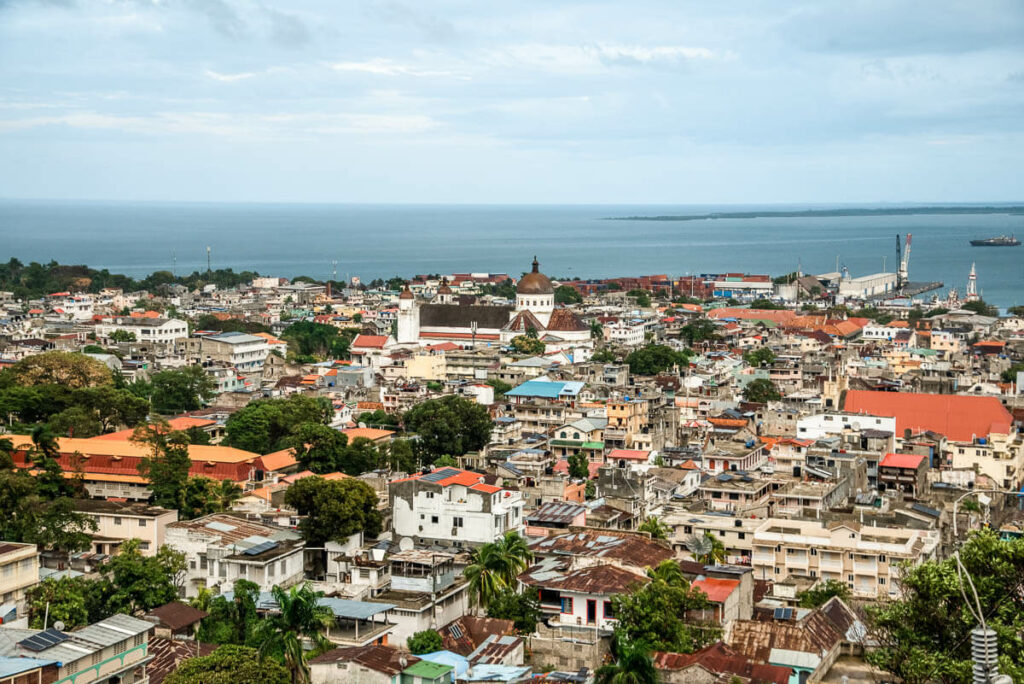
I traveled independently through Haiti for 10 days, from Cap-Haïtien to Port-au-Prince and a few places in between, always using local transportation or hitchhiking, as well as a short domestic flight.
It was a fantastic trip, and I recommend visiting Haiti to anyone looking for an unrivalled offbeat adventure in the Americas.
This updated and comprehensive travel guide to Haiti will show you everything you need to know on safety, top experiences, getting there and more.

In this Haiti travel guide, you will find
Table of Contents
- Haiti today
- Is it safe?
- Travel Insurance
- When to travel
- Top Experiences
- How to get into?
- How to travel around
- How to deal with extreme poverty
- People & Religion
- Taking photos
- More information
eSIM card for browsing when traveling in Haiti
With Holafly , you can now get an electronic SIM card for Haiti from home with just 2 clicks.
5% discount with the following code:
AGAINSTTHECOMPASS
😍 Why travel to Haiti?
Haiti is a Caribbean country that occupies one third of La Española (Hispaniola), an island it shares with the Dominican Republic.
Everyone knows about Dominican Republic and its dreamy beaches, yet few have heard about traveling in Haiti.
The first thing you need to know is that Haiti was the first country to ever be liberated by slaves , in 1803.
At that time, Haiti was ruled by the French, who had spent the previous decades importing hundreds of slaves from West Africa – mainly from Mali and Benin – to work on their sugar plantations.
The peculiarity about Haiti is that when it achieved its independence, many of those slaves had been born in Africa but became Caribbean overnight, and this is the number one reason for visiting Haiti: a purely Caribbean country that still keeps its African culture, traditions and essence .
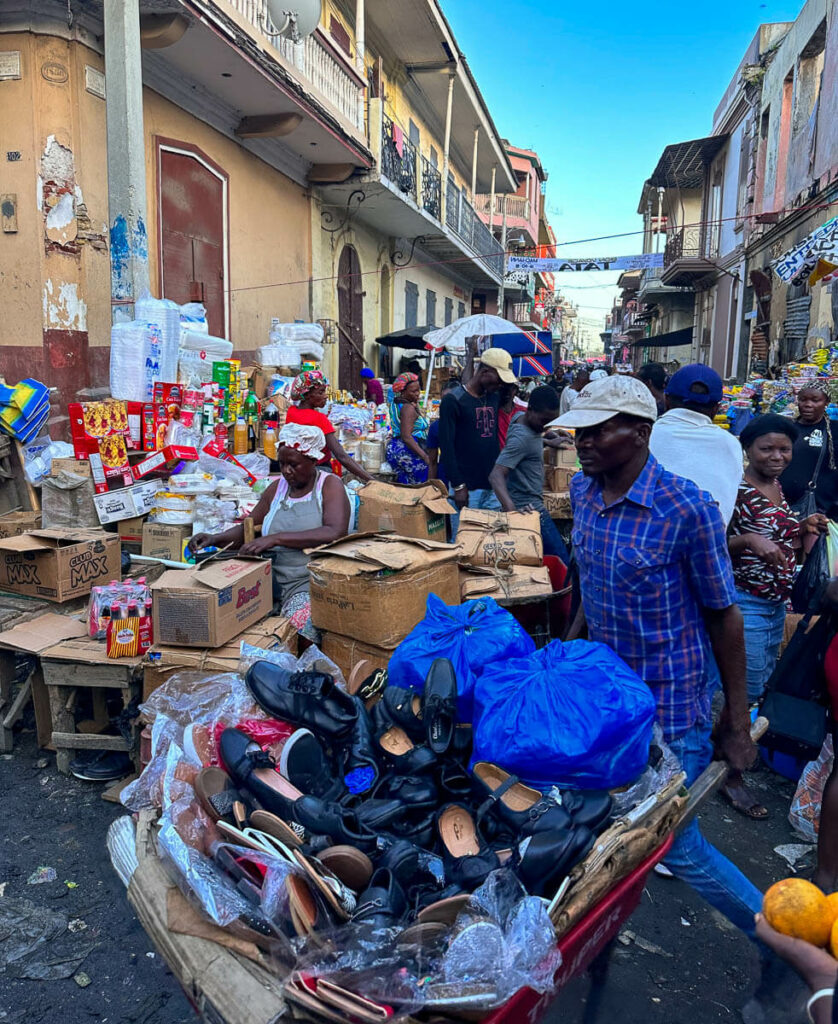
Traveling in Haiti truly feels like traveling in West Africa, with all that default chaos intrepid travelers feel attracted to, but also in terms of their art, music and religion.
Add to this the world-class Caribbean beaches and landscapes, and the result is, perhaps, the most gorgeous and fascinating off-the-beaten-track destination in the American continent.
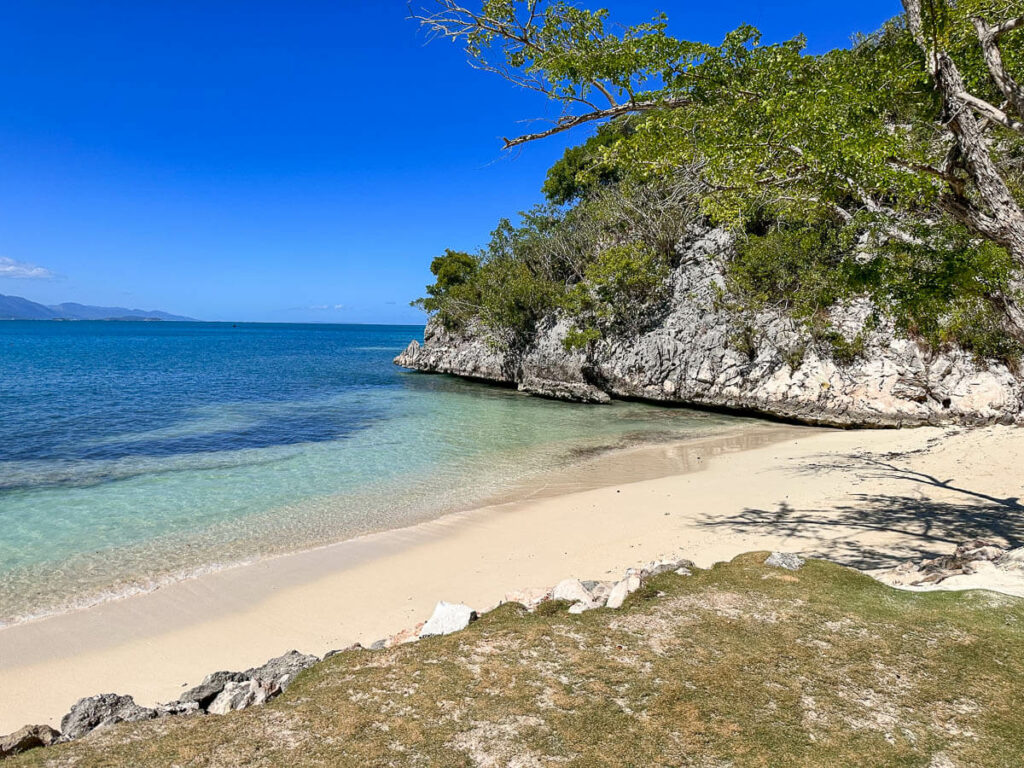
The problems with cruising in Haiti
Not many people travel to Haiti, but the majority of those that do make it there tend to do so on one of those massive cruise ships sailing across the Caribbean, hopping on and off at the major resorts on the main islands.
In Haiti, near Cap-Haïtien, there’s one place in the area of Labadee where cruise ships stop. Anyone not on a cruise – and that includes foreigners too – is banned from entering that tourist bubble, while those on the cruise ships are told that everywhere outside of the bubble is extremely dangerous, meaning you won’t see any of them in the surrounding areas.
I have often wondered whether those cruise tourists even know they’re in a country named Haiti.
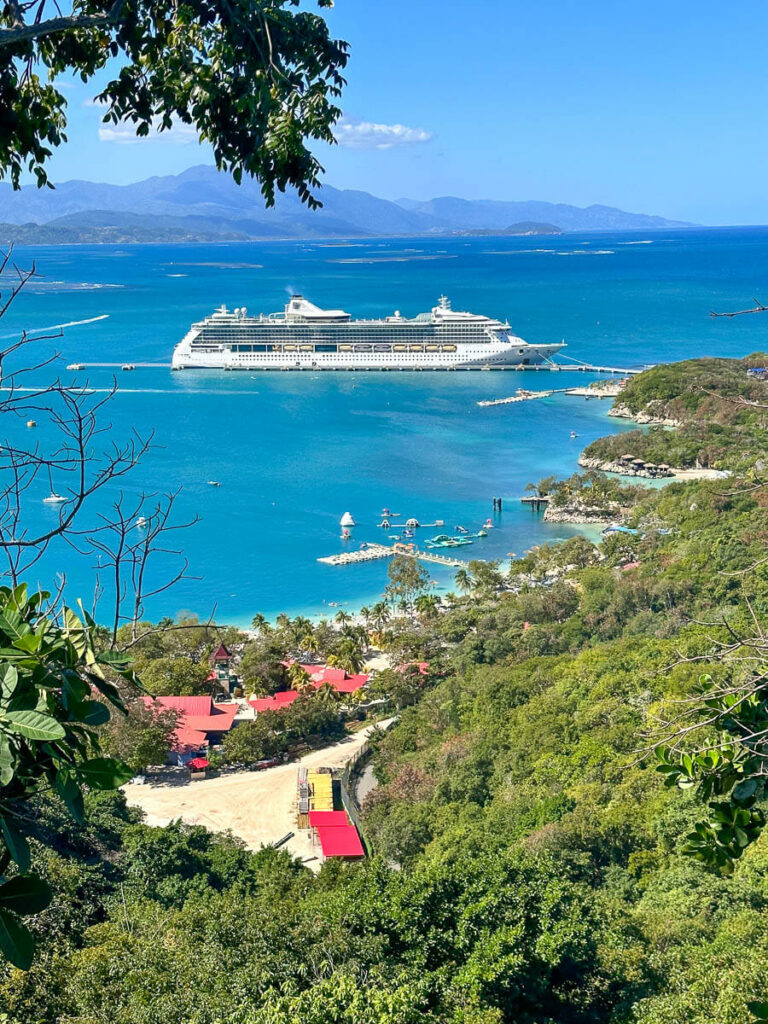
🇭🇹 Visiting Haiti: what’s the current situation
Economically-speaking, Haiti has always struggled, but today it is also experiencing some pretty dark periods of extreme violence.
When I first visited Haiti in January 2023, the country was on the front pages and in the headlines of all reputable international newspapers.
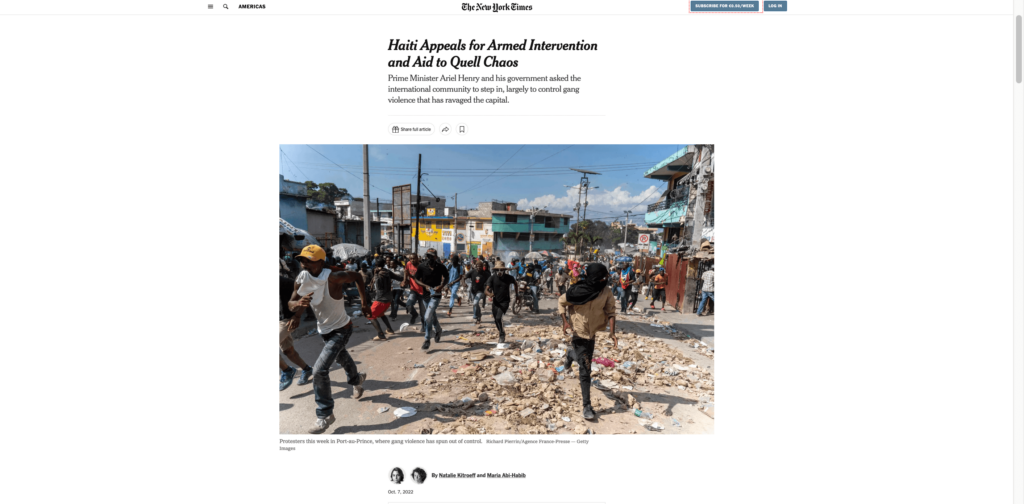
But what had happened?
Well, Haiti had been going through an episode of real anarchy ever since Haitian President Jovenel Moïse was murdered in 2021.
Since then, various different gangs had taken the streets of Port-au-Prince, the capital of Haiti, with violence escalating to unprecedented levels.
Kidnappings, murders and street shootings happen every single day, in a conflict that has already created more than 200,000 internally displaced people.
At the time of writing, the travel situation in Haiti basically remains the same and such is the gravity that many governments are already referring to Haiti as a failed state – a pretty harsh term typically used for countries like Yemen or Libya – while asking for foreign intervention as well.
The earthquake from 2010 In 2010, a 7.0 earthquake shook the capital of Haiti for 35 seconds, killing thousands of people and leaving 1/3 of Port-au-Prince’s population completely homeless. By that time, Haiti was already one of the poorest countries in the world, so you can imagine how devastating this natural disaster was for Haitians. In fact, they say that the country has never recovered from it and, what with all its current social and political issues, the result is one of the most fragile countries on the planet.
⚠️ Is it safe to travel to Haiti right now?
Let me put things into perspective.
I have backpacked solo in Afghanistan , Iraq , Syria , and Somaliland , just to name a few.
I rarely worry when traveling in these areas, mainly because I have a lot of contacts in these countries, but also because I have solid experience of traveling in such regions.
My visit to Haiti, however, was a different story:
- It was my first time traveling in the Caribbean
- I didn’t have any contacts
- All I knew about Haiti was what I had seen in the news
- I didn’t know of any travelers who had visited Haiti during these anarchic times
Additionally, the FCDO travel advice for Haiti wasn’t very positive either, firmly advising against all travel to Haiti due to the volatile security situation.

I had all the odds against me, but that made me feel particularly excited; plus if there’s one thing I’ve learnt during my travels, it is that things on the ground look very different from what you see in the news.
Yes, that extreme violence is actually happening but the truth is that this conflict is exclusively focused on Port-au-Prince.
In fact, it’s focused on certain areas of Port-au-Prince: the areas controlled by the different gangs.
Is Cap-Haïtien safe?
Outside of those areas, Haiti is OK to travel, especially in Cap-Haïtien and its surroundings.
Things I did around Cap-Haïtien:
- Hitchhiking around the area
- Walking through a slum on my way (on foot) to Labadee
- Walking around in the dark, in the middle of the night
All I can say is that this part of Haiti was extremely peaceful.
Is Port-au-Prince safe?
Port-au-Prince, however, is a different story. You can still travel there though, as long as you have the right contacts and stay in the right area, e.g., in Pétionville.
In Pétionville, you can still wander and walk around alone at night, no problem.
As for the dangerous parts of Port-au-Prince, I did venture downtown and even to Cité de Soleil, the largest and poorest slum in the Americas – and one of the main violence hubs in the city.
Nevertheless, I went there with a local fixer who is specialized in taking journalists into conflict areas.
That man knew what he was doing, plus he was a personal, old acquaintance of the gangs.
Nevertheless, heading into that area of Port-au-Prince doesn’t come without risk, especially from direct bullets, but that’s a risk travelers choose to assume. Definitely not an adventure for everyone.
Important: I won’t be sharing the fixer’s contact details, so don’t bother asking me for them. As mentioned, this activity is not without risk and if travelers start venturing into such areas, someone will eventually get shot and I don’t want to be part of that.

🪪 How to get a visa for Haiti
You don’t need a visa to visit Haiti, instead you just get a free stamp on arrival in the country.
This rule applies to both airport and land borders.

🚑 Travel Insurance for Haiti
Get travel insurance for travel in Haiti.
Reason why I recommend IATI:
- Many different plans for all types of travelers
- Avaiability of low, basic plans
- Covers senior citizens too
- Readers of this blog can get an exclusive 5% discount .
⛅ When to travel to Haiti
Traveling in Haiti is highly seasonal.
Best season to travel to Haiti
The best time to travel in Haiti is between November and March – that’s the dry season.
In February, you might catch the world-famous Carnival of Jacmel but you’ll have to be lucky, since the carnival is locally organized and dates always change, although it tends to always be celebrated between the end of February and beginning of March.
Worst season to travel in Haiti
The worst time to visit Haiti is from August to October, which is the rainy season, with potential hurricanes.
🛖 Top 5 Experiences in Haiti
1 – hiking up to citadelle laferrière.
This is one of the best forts I have ever seen, and the views from there are gorgeous.
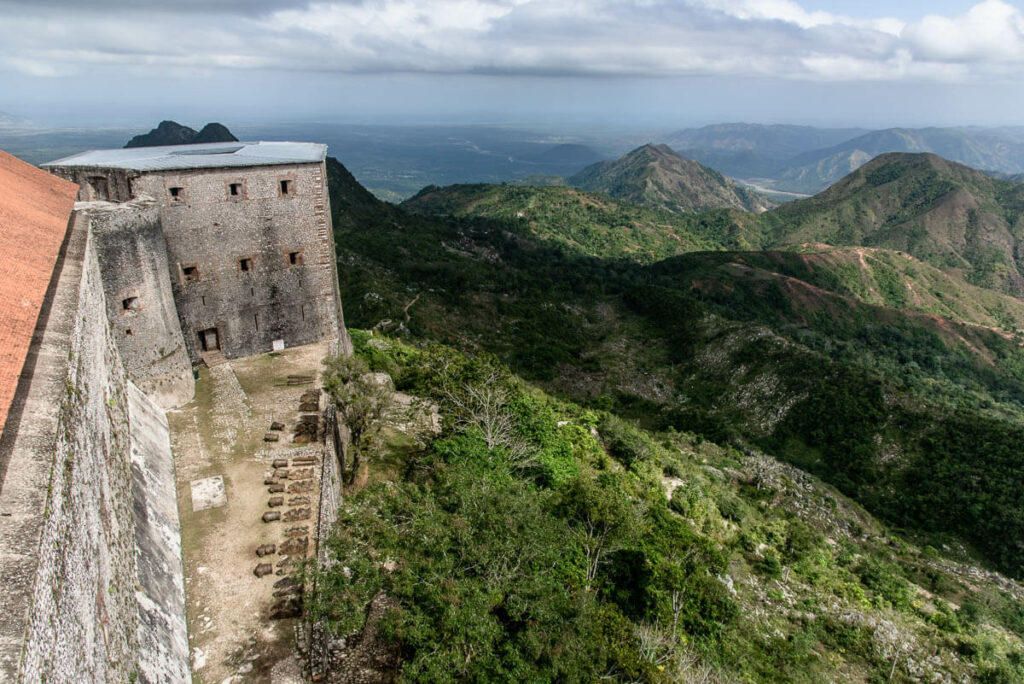
2 – Backpacking independently
No other country in the Americas feels as raw, chaotic and authentic.
Traveling in Haiti doesn’t differ much from the rough backpacking you can do in Mali or Benin.
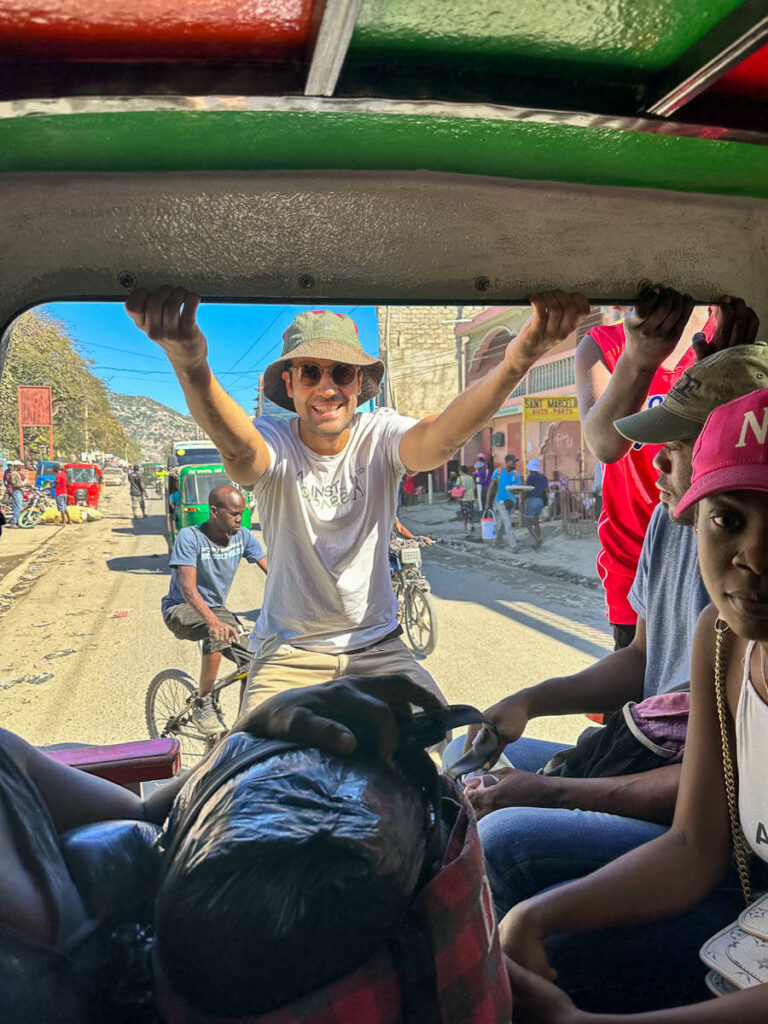
3 – Attending a voodoo ceremony
Voodoo ceremonies, a clear West African heritage, are performed every week.
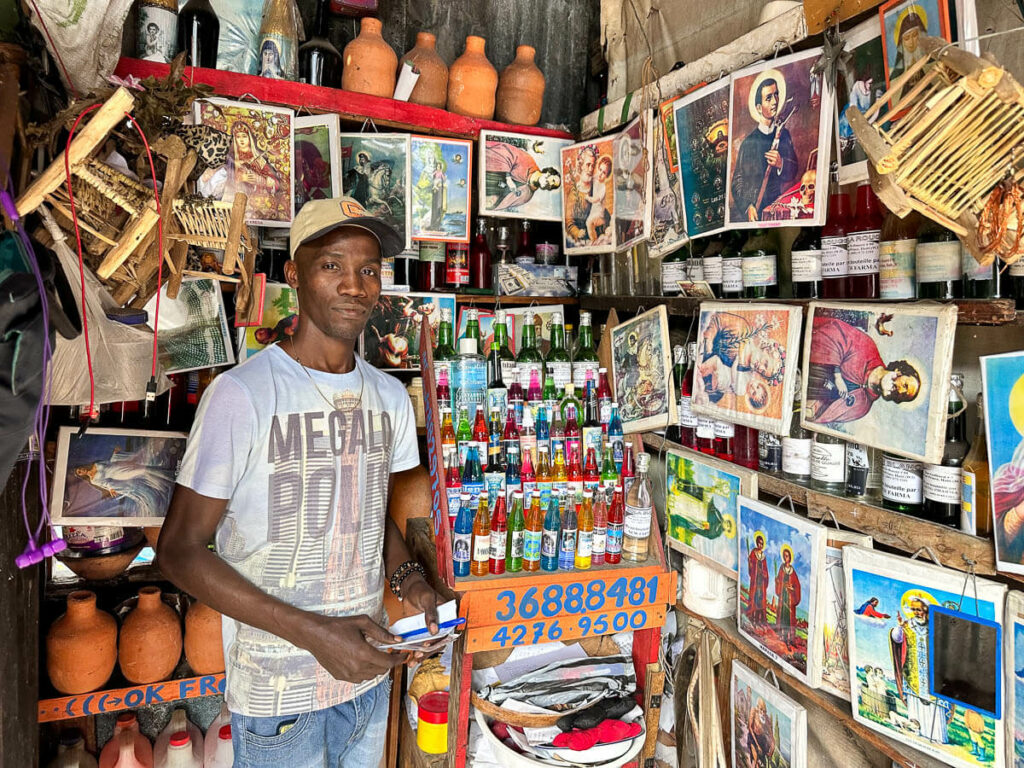
4 – The art scene in Pétionville
There’s a lot going on in Port-au-Prince, and the art scene in the refined district of Pétionville is a must-see.

5 – The coast around Labadee
Haiti has the most beautiful coastline on the island, and Labadee has the cleanest shores and water.

🛫 How to get to Haiti
Remember to get travel insurance for Haiti IATI Insurance is one of the very few that covers travel in Haiti 5% discount if purchasing via this link
How to travel to Haiti by air
The easiest way to fly to Port-a-Prince is from Miami (MIA) or Fort Lauderdale (FLL), and also New York City (JFK).
Which airlines fly to Haiti?
Jet Blue Airways and American Airlines have daily flights into Port-au-Prince.
How to get to Haiti from Dominican Republic – By land, best choice
I personally believe that traveling to Haiti from Dominican Republic is a much better option, for 3 reasons:
- Flights to Santo Domingo or Punta Cana are much cheaper, plus there are endless connections to many cities around the world.
- If you haven’t visited Dominican Republic before, you can combine both countries in one single trip.
- Traveling in Haiti is actually pretty rough so after a few days of tough backpacking, traveling in Dominican Republic can be a very pleasant and rewarding experience.
To reach Haiti from Dominican Republic, you can take one of the daily buses connecting Santo Domingo with either Port au Prince or Cap-Haïtien.
The company running such trips is called Caribe Tours , and it departs from this terminal .
I strongly recommend going to the terminal at least 1 day in advance to book your tickets, since the tickets commonly sell out.
The bus departs between 7am and 8:30am but do confirm the departure time upon booking your tickets.
A one-way ticket costs around 30-35 USD.
Additionally, you will have to pay 37 USD for exit/border fees. This amount is usually paid before boarding the bus, not when booking your ticket.
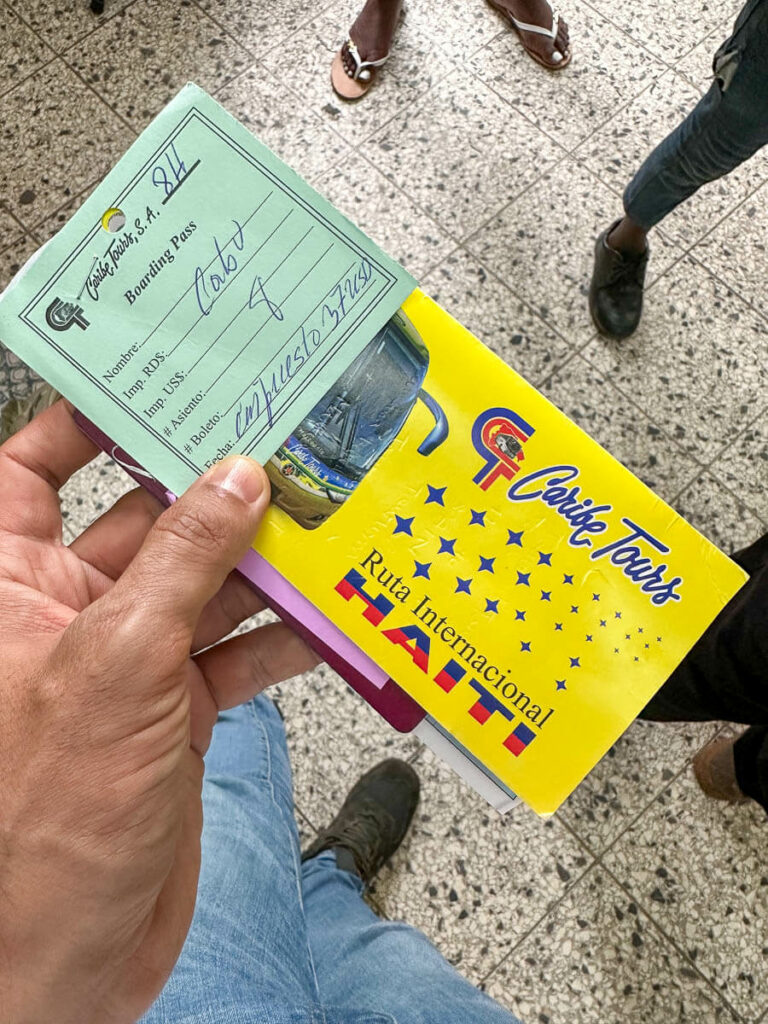
The whole ride from Santo Domingo to either Cap-Haïtien or Port-au-Prince can take from 8 to 12 hours. The bus has unreliable Wi-Fi, and they provide a truly awful, meat-based meal on board.
The border crossing is pretty chaotic, but there will be an attendant on the bus to assist you with all the procedures.
My experience entering and exiting Haiti I took the bus from Santo Domingo to Cap-Haïtien but on the way back, I traveled from Port au Prince independently, meaning that instead of taking a direct bus, I took different minibuses and tap-taps to the border, then crossed on foot into Dominican Republic. Once in Dominican Republic, you can find transportation to several other cities. This is a slower but more adventurous option, perfect for those wanting to explore beyond the main cities. If going to Cap-Haïtien, you cross at Dajabon. If going to Port-au-Prince, you cross at Comendador.
🛺 How to travel around Haiti
Moving around haiti by tap tap.
The official, local transportation is the tap-tap , an ornately decorated pick-up truck that won’t leave until full of passengers, who can get off at any point during the ride.
Traveling in Haiti by tap tap is ridiculously cheap, and you can use them to get to nearby sights and villages.
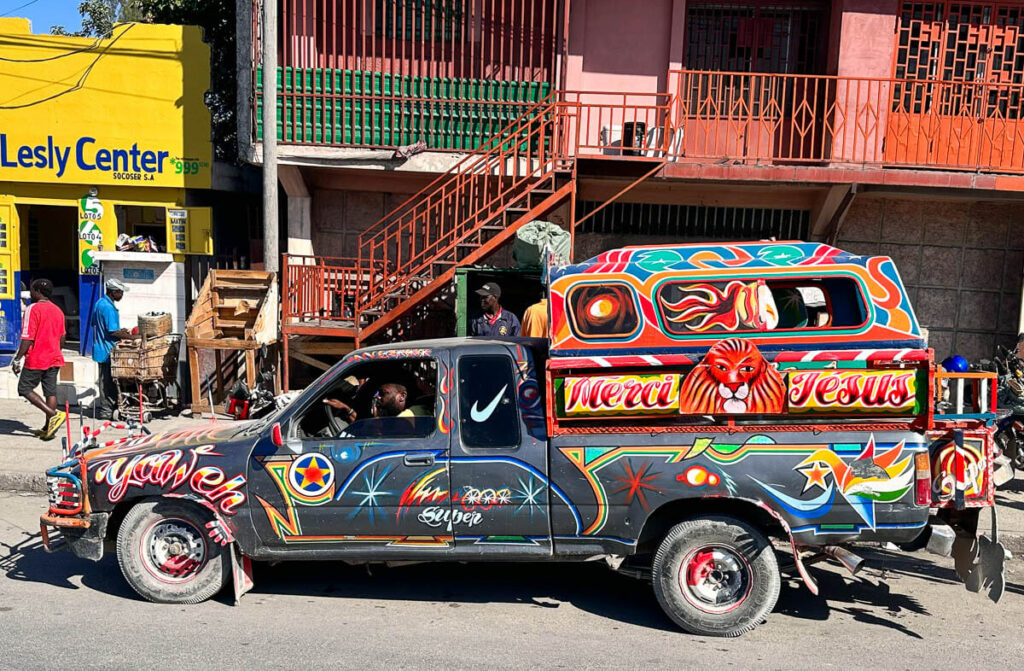
Travel around Haiti by minibus
For longer distances, Haitians travel by minibus .
Traveling around Haiti by air
Haiti is a tiny country but small domestic planes run between major cities.
The local airline is Sunrise Airways .
I did take a 25-minute flight from Cap-Haïtien to Port-au-Prince and the reason was that everyone in Cap-Haïtien told me it wasn’t possible to travel there by bus, claiming that the road section close to Port-au-Prince was overrun by gangs.
Upon arrival at the capital, I discovered that this wasn’t true and that buses were simply taking a different, longer route, so for the return journey I did take the bus.
In any case, taking a Sunrise Airways flight was a lot of fun, since they use those small, 20-seat planes where there’s no door between the passengers and the pilots.
Moreover, Cap-Haïtien airport was so small that you could literally get to the airport 15 minutes before departure and still make it on time to catch your flight.
A one-way ticket from Cap Haïtien to Port-au-Prince cost me 125 USD.
💰 Money and budget when traveling in Haiti
In Haiti, they use the Haitian Gourde and, approximately:
1 USD = 135 HTG
Exchanging money in Haiti
Certain banks do exchange currency but I exchanged mine at the hotel in Cap-Haïtien, Habitation des Lauriers .
They prefer US dollars but I believe Euros can be exchanged too.
Card payment and ATMs in Haiti
Unlike countries such as Syria or Iran , Haiti is not a country under sanctions, so you can easily withdraw money from certain ATMs and even pay your hotel by card.
For the rest, Haiti is pretty much a cash economy.
How much does it cost to travel in Haiti?
Haiti is actually quite expensive, much more than Dominican Republic.
How much does accommodation cost in Haiti?
Accommodation isn’t great in Haiti and you can expect to pay a minimum of 50 to 70 USD for a basic room.
Rooms are basic but the hotels are relatively decent, meaning that they provide services, speak English and are used to dealing with foreigners.
However, you might be paying 60 USD for a very basic room with no AC and where water and electricity issues are common.
I heard that some travelers were staying in hotels cheaper than that, where local Haitians stay, but expect their facilities to be beyond basic.
How much does food cost in Haiti?
Food in Haiti can be pretty expensive too.
A meal in a restaurant will cost around 10 USD, and up to 20 USD in fancier restaurants.
Local street food is obviously much, much cheaper – maybe 1 USD for a meal – but it’s not great.
How much does transportation cost in Haiti?
Local transportation is particularly cheap, like you can expect in any country of this kind.
A tap tap ride will rarely exceed more than 50 cents and a minibus between cities will cost a couple of USD.
Backpacking budget for Haiti From 85USD a day
How to deal with extreme poverty when visiting Haiti
Haiti is the poorest country in the American continent and within the 25 poorest nations in the world, according to all rankings .
The extreme poverty and lack of proper infrastructure can be seen everywhere in Haiti, including in areas of Port-au-Prince which are supposed to be good.
There are absolutely humungous piles of burning trash at every corner, no electricity at night and so many people looking poor and miserable.
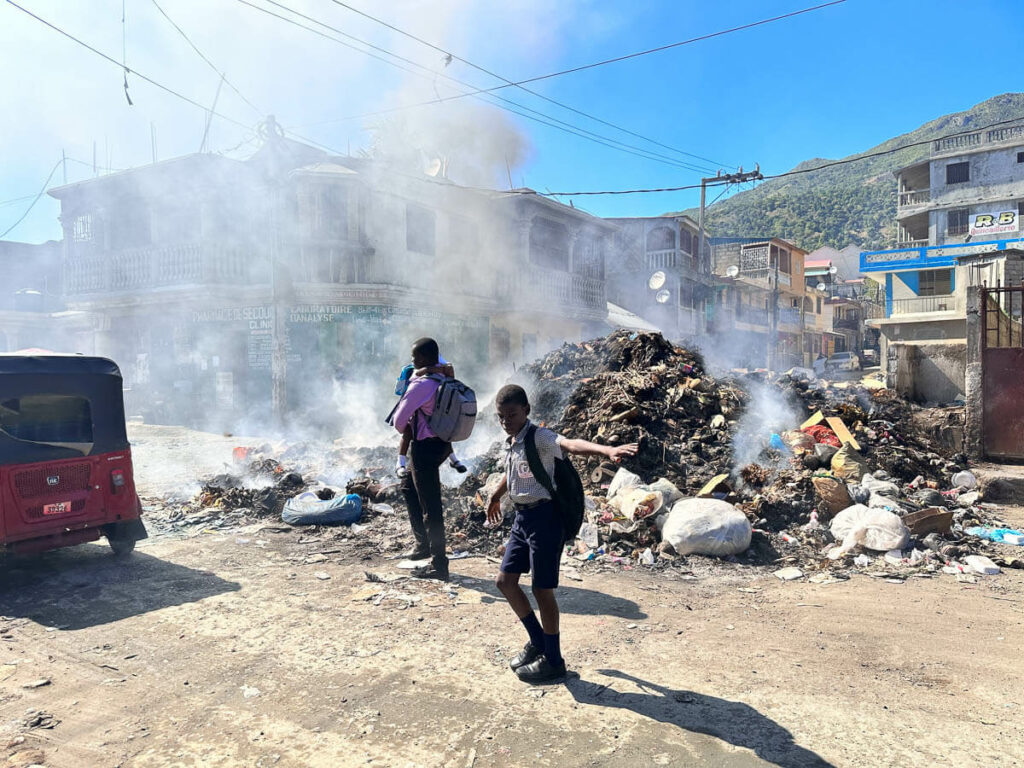
Foreign travelers stand out a lot, so do expect to be stared at by everyone.
As with all the countries I have been to, most people you meet in Haiti are nice and pleasant, but I also found some beggars to be particularly intense and aggressive, so be mentally prepared to handle such situations.
Getting ripped-off when traveling in Haiti
Getting ripped-off isn’t the general norm but once in a while, some people may try to overcharge you.
This happened to me several times when taking a tap tap , and in local bars too. A bottle of Prestige – the Haitian beer – should never be more than 1 USD in a bar of that kind, but I often paid almost 3 USD. Entirely my fault for not asking their price first.
Haiti: people and religion
Today, Haiti is a Caribbean country where the vast majority of people are descendants of former black African slaves.
Note that the Taíno were the indigenous people to the island but Columbus and his Spanish crew exterminated them in a matter of years.
Some former French colonists also left their descendants by having children with their slaves, leading to lighter-skinned Haitians called mulattos. Nowadays , mulattos form the majority of Haiti’s elite, political and economic class.
The few other Haitians are mainly of Arab descent, from Lebanon and Syria , and you might see them hanging out in the wealthiest areas of Port-au-Prince.
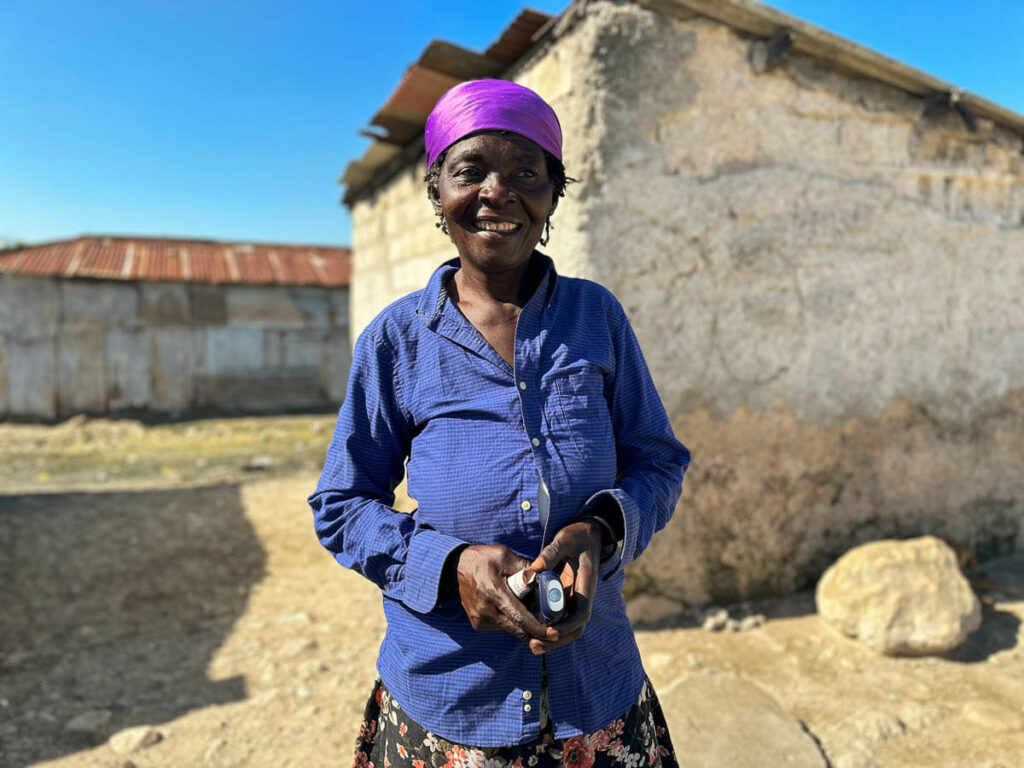
Religion in Haiti
Haiti is a very religious country and such is the influence of their West African ancestors that Vodou is recognised as the official religion of the state, along with Catholicism.
Churches are always packed on Sunday but Haitian Vodou also plays a significant role and attending a ceremony is one of the highlights of backpacking in Haiti. However you will need to be lucky to catch one.
Unfortunately, I wasn’t able to attend one but I did visit a Vodou temple, a workshop where they sold Vodou-related artifacts and also a market.
Haitian Vodou revolves around spirits known as Iwa and here you can read more about it .
These 2 pieces of Vodou art can be found in Atis Rezistans , a workshop that creates art out of garbage. This was one of the most interesting places I visited during my trip to Haiti.
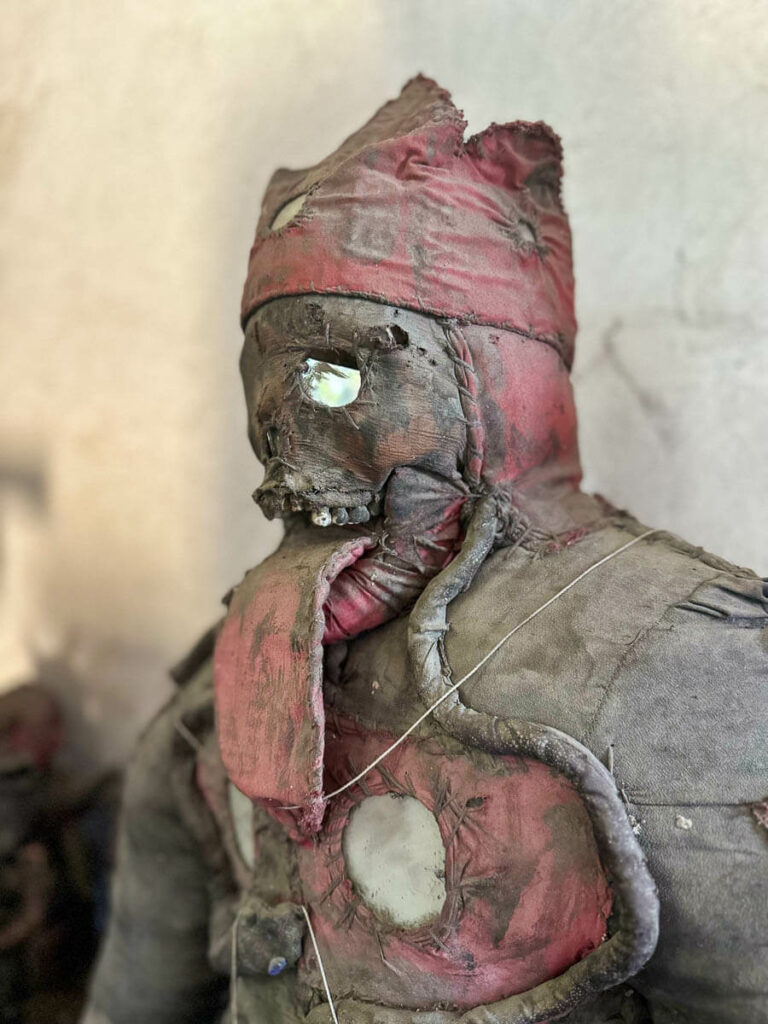
📸 Taking photos of people when traveling in Haiti
I think Haitians are the most camera-shy people I have ever met on my travels.
They are so shy that you might even be yelled at for just taking a picture of a street, without pointing your camera at anyone’s face in particular.
They just don’t like it so when wandering around markets, for example, always ask for permission – but believe me when I say you’ll rarely be granted it unless you’ve been interacting with them prior to asking.
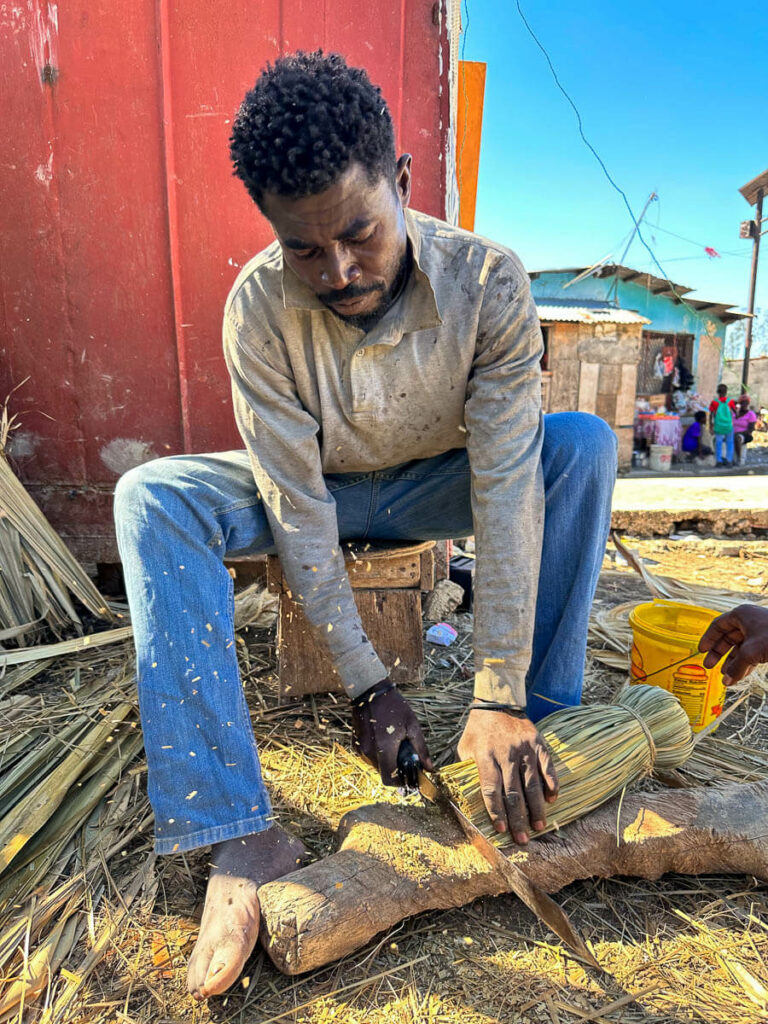
💬 Language in Haiti
Both Creole and French are the official languages in Haiti.
French is the language used by the Administration and Haiti’s elite.
Creole is used by everyone else, and it’s a peculiar mix of French, Spanish, English and even Taíno, they claim.
However, French-speaking people won’t be able to understand Creole, and typically, lower-educated people don’t speak French either.
English is also rarely spoken in the streets.
🍲 Haitian cuisine
I will never be a fan of Caribbean food.
I find it bland and boring, but it can be eaten.
Typically, all restaurants will serve a portion of protein alongside fried plantain and rice mixed with black beans.
Protein can be anything from grilled fish (pwason poukannen) to pork (griot), chicken and even lobster, if you go to the right places.
Except for just one or two days, I ate combinations of the above at absolutely every meal.
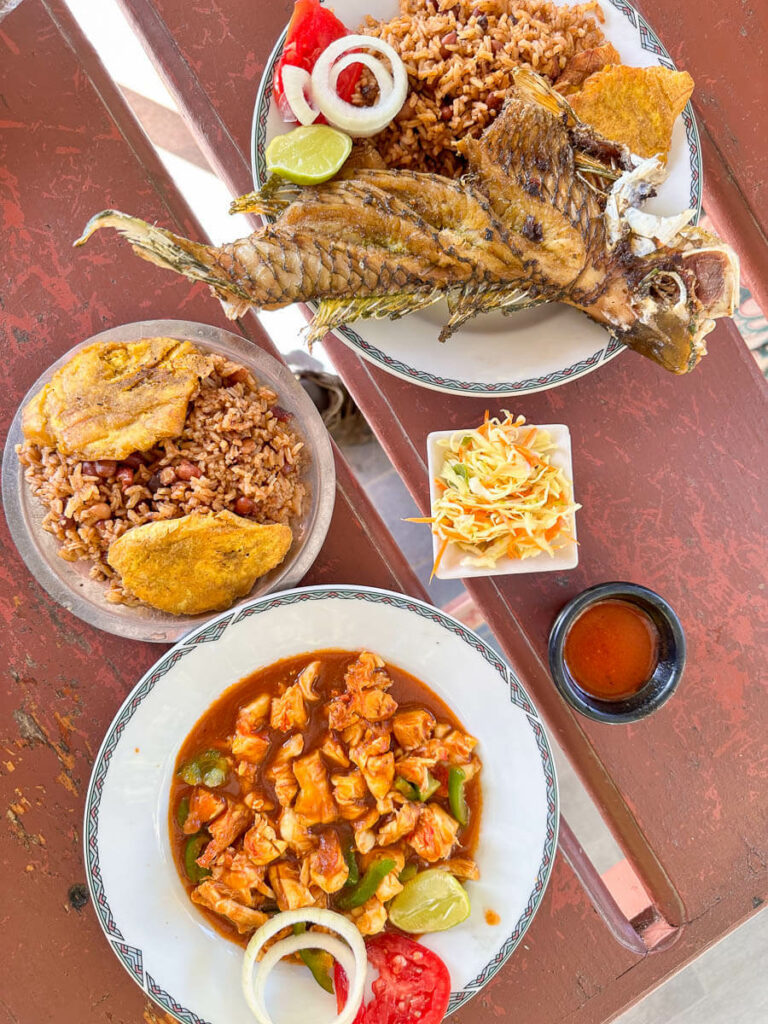
🍻 Alcohol in Haiti
The national beer is called Prestige. They sell it everywhere and Haitians drink it at any time of day.
Haitians are also very proud of their locally produced rum, the best brand being Barbancourt.
💻 Internet in Haiti
Generally-speaking, Wi-Fi is pretty awful across Haiti, so I strongly recommend getting a SIM card, which works relatively well.
eSIM for browsing, calling and traveling in Haiti
Basically, an eSIM is a regular SIM card with a digital format that works like a normal physical SIM card, with the added benefit that you can buy it from home before the beginning of your trip, hence avoiding the hassle of buying it at your destination.
With Holafly , you can get a SIM Card for a wide range of destinations, including Haiti .
Moreover, you can benefit from a 5% discount with the following code: AGAINSTTHECOMPASS
Get a VPN for traveling in Haiti
You should always use a VPN when you travel, especially when you connect to public Wi-Fi networks.
Your connection will be much safer.
Moreover, you will be able to access content which is typically censored in Kazakhstan.
I recommend ExpressVPN – Extremely easy to use, fast and cheap.
If you want to learn more about VPN, check: Why you need a VPN for traveling .
❗ More information
📢 In my Travel Resources Page you can find the list of all the sites and services I use to book hotels, tours, travel insurance and more.
All guides and articles for traveling in Haiti destination
- Haiti Itinerary
Check travel tips to the following offbeat countries:
- Afghanistan
Other Related Travel Guide Articles:
- How to visit Angel Falls
- How to visit Los Llanos
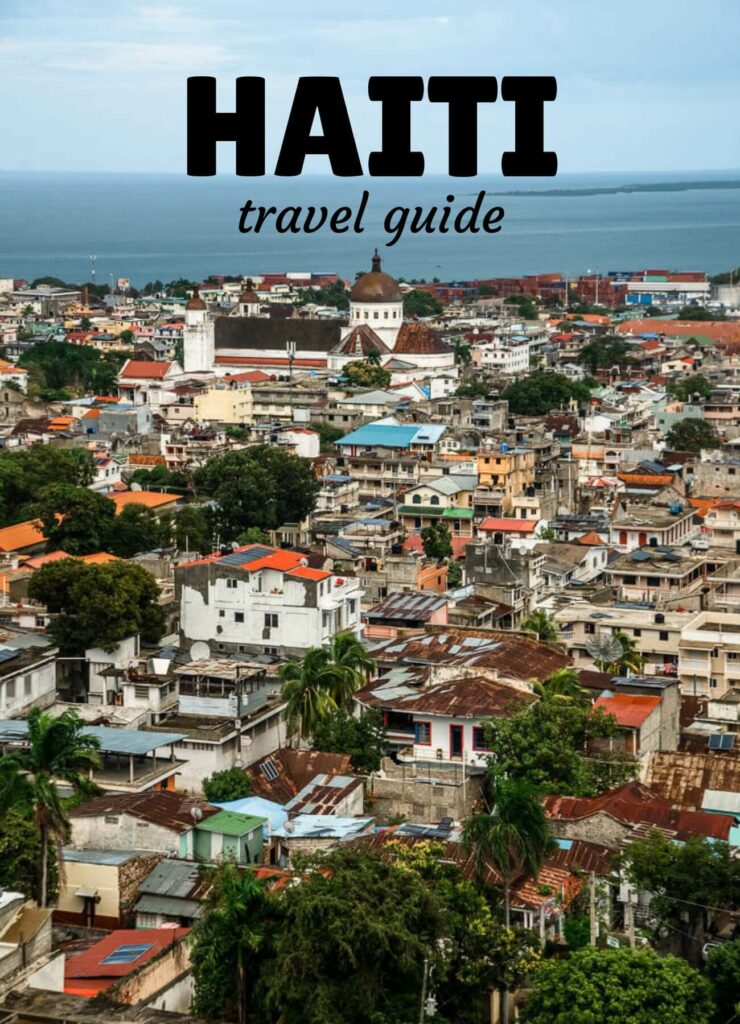
10 comments
Wow! Thank you for this comprehensive guide. I am travelling From London to Haiti in December ’23, and I plan to stay for a month. The plan is to fly direct from Heathrow to the Dominican Republic and take another flight from there to Cap Haitian. It’s quite expensive as altogether the cost of flight alone is nearly £2000.00. After that, I have to pay for Hotels and from what I am reading from your write-up, for one month stay, the cost will go through the roof. I set. aside a budget of £5000.00 so I hope the is enough because anything more than that and I will be forced to cancel my trip.
Hi Henry! I think you can save a lot by taking the bus from Santo Domingo to Cap Haitien
Thank you so much for the swift response. The airline costs are not a problem so I don’t mind flying from the Dominican Republic to Cap Haitian. What I am worried about is the price of accommodation which you said is somewhere around $60 per day for a basic room? This means a Hotel (which is where I plan to stay) will cost 3x as much per day. This is my main concern.
Do you know of any good but cheap Hotels to recommend?
Utter stupidity to do all this
This is a really informative guide, and I’m glad that some parts are relatively safe. One thing I will say however is, don’t completely write off Caribbean food. That is a pretty bold claim considering this was your first time in the region and there are countless other Caribbean countries with different cuisines and cooking methods. I implore you to try them all, including the non-islands like Belize, Guyana, and Suriname. Keep up the great work!
Thanks Neron, I’ll give it another try one day!
Thanks for your up-to-date information regarding Cap-Haitien to Santo Domingo by Calibre Tour bus. I will be travelling these cities in April 2024, but up until now, had trouble obtaining reliable information for bus travel.
Amazing, let us know how it goes!
I notice pretty affordable car hire in CAP, which I figured may be a good way to see the surrounds, such as Citadelle Laferrière. Is it safe (& necessary) to drive a rental car?
Whilst I understand that ATM are available, would you recommend taking along sufficient amounts of USD? I plan to book accomodation (& car if required) online, which I expect to make payment up-front. Thanks again.
Hi, it should be safe to rent a car around CAP but not strictly necessary. I traveled all around and didn’t hire any.
You can withdraw money from ATMs, doesn’t matter whether you take sufficient USD or not, up to you.
Leave a Comment Cancel reply
Your email address will not be published. Required fields are marked *
Notify me when new comments are added.
1946-2006, 60 ANS DE SERVICE AUX VOYAGEURS / MERCI DE VOTRE FIDELITE PASSEE ET FUTURE
Choose your language

Welcome to Haiti
A land with a soul
Plan your holiday to Haiti
Haiti up-close
When is the best time to visit Haiti?
Haiti Up Close
7 Haitian Artists to Follow on Instagram Now
With Art X Ayiti’s help, we've rounded up seven unique Instagram accounts highlighting Haitian artists here in Haiti and across the Haitian diaspora.
Food & Drink
Where to Eat in Cap-Haïtien
Here are the best restaurants in Cap-Haïtien, according to a local. Don't miss this one local ingredient you have to try!
How to Attend a Vodou Ceremony in Haiti
Skulls, sequins and gunpowder smoke - here’s a glimpse inside a modern Haitian Vodou ceremony. Find out how to attend and what to expect.
People gathered at a Vodou ceremony
Photo: Pierre Michel Jean
Looking for some cool things to do?
Explore the waterfall and grottoes of bassin zim.
Bassin Zim is a spectacular natural landmark in Haiti, with
Explore Haiti’s Contemporary Art Scene at Villa Kalewès
Kalewès is creole for “hangout” and Villa Kalewès, a Petion-Ville
The Museum of the Haitian National Pantheon
Get up close to artefacts from a Colombus ship, slave
Festi Graffiti – Haiti’s International Festival of Urban Arts
Haiti may be known for beaches and rum, but the
Parc de Martissant
Stroll through lush rolling lawns, roped paths, feature trees, flower
Rum is big in Haiti. Here’s what to drink.
While the Barbadians are said to have invented modern rum,
Meet the Haitian Artists from the Village of Noailles
In the ramshackle streets of Croix-des-Bouquet, the artistic village of
Party like a Haitian at Jacmel Carnival
A weekend of partying at Jacmel’s annual Carnaval is the
Discover Eight of the Best Beaches in Haiti
Discover the stunning beauty of Haiti's coastline with our guide
Jump into Saut-Mathurine – Haiti’s Biggest Waterfall
The south coast is full of hidden treasures waiting to
Adventure awaits
Travellers exploring the Kaskad Pichon waterfalls, Haiti
Photo: Franck Fontain
Summer activities and tips!
Food & drink
Have you tried these 7 Haitian summer flavors?
Destinations
Jacmel City Guide
Things to do
Gelée Beach
Jacmel is Haiti's second-largest city. Read our guide to find
Close to Les Cayes in southern Haiti, Gelée Beach offers
This 200 year-old fortress site is cared for by the
Have You Tried These 7 Haitian Summer Flavours?
Whet your appetite and test your knowledge of Caribbean cuisine
Travel to Haiti for less
Aerogare Guy Malary, Port-au-Prince, Haiti
Photo: Ricardo Lartigue
Our Instagram
@visithaiti, subscribe to our newsletter.
Get more travel inspiration, tips and exclusive offers sent straight to your inbox
I would like to get VisitHaiti newsletters in my inbox
Paradise for Your Inbox
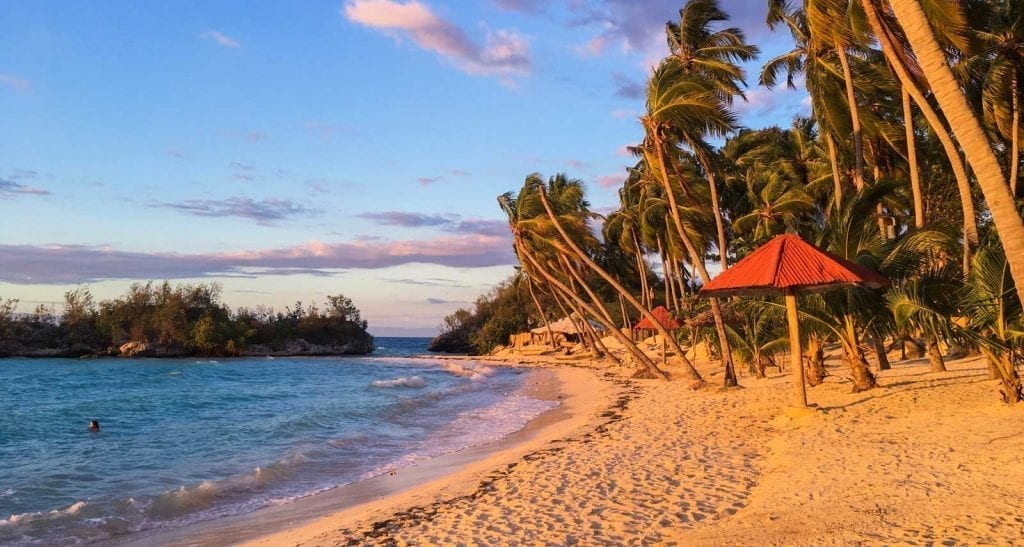
Subscribe to our newsletter for the best monthly stories and insider guides about Haiti!
I would like to get Visit Haiti newsletters in my inbox
AGENCE CITADELLE Tours et Voyages

- See all photos

Similar Experiences

AGENCE CITADELLE Tours et Voyages (Petionville, Haiti): Hours, Address - Tripadvisor
- Visit Oyster on Facebook!
- Visit Oyster on Pinterest!
- Visit Oyster on Instagram!
- Visit Oyster on Twitter!
- Subscribe to stay up to date!
Yes, send me expert tips and deals!
By proceeding, you agree to our Privacy Policy and Terms of Use .
- Subtract one room 1 Rooms Add one room
- Subtract one adult 2 Adults Add one adult
Should You Visit Haiti? What You Need to Know Before You Go
See recent posts by Kyle Valenta
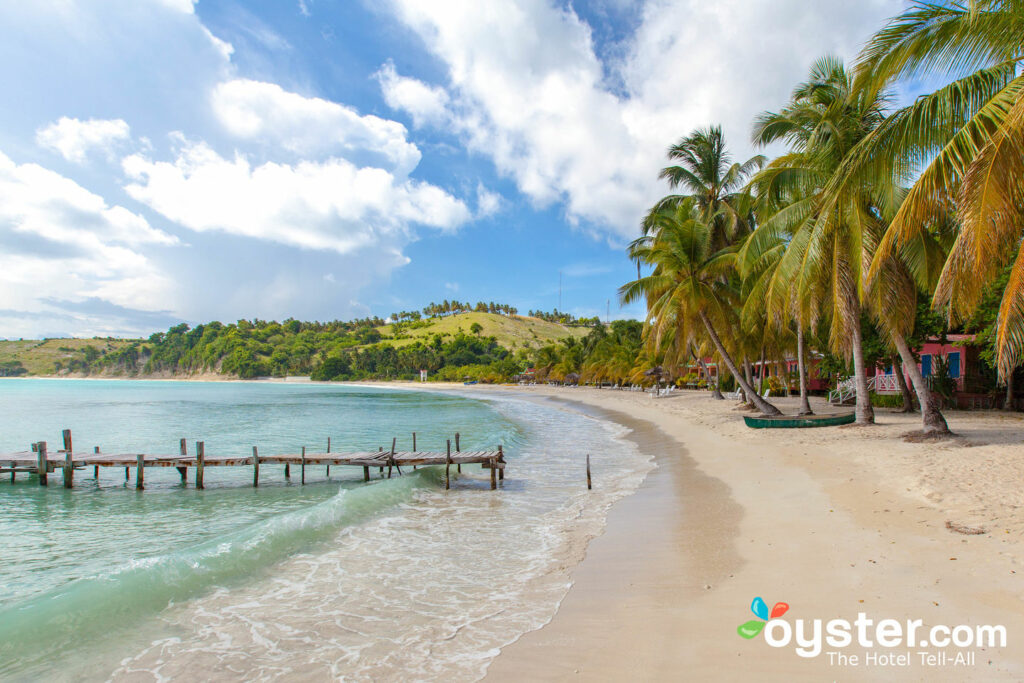
The beach at Abaka Bay Resort , on Ile-a-Vache.
In Mumbai , travelers can take tours of the Dharavi slums. Guidebooks for Rio de Janeiro have been recommending guided walks through the mountainside favelas for years now. And every day in northern Thailand , busloads of tourists from Chiang Mai roll into villages inhabited by Kayan tribespeople, where some of the women are known for their dramatically elongated necks wrapped in metal coils.
The disparities between the haves and have nots is an old story, and a familiar one to many travelers. However, that paradox might find its pinnacle in Haiti . For most Americans, the country’s name likely calls to mind images of shanty towns, rampant poverty, political instability, disease outbreaks, and the most cruelly aimed of natural disasters. And while those stereotypes might seem like enough to put off most travelers, the numbers tell a different story.
International travel to Haiti may very well be having a moment. According to the World Bank , from 2004 to 2014, the number of international travelers arriving in Haiti increased nearly 263 percent. When we corresponded with Regine Godefroy, a representative of the Ministere du Tourisme, she told us that this is no surprise. “The positioning of Haiti, and the slogan ‘Haiti is open for business,’ make Haiti a unique destination,” she reveals. “This new dynamic has engaged Haiti’s tourism into a new process of receiving foreign investors.”
Indeed, major international companies like Royal Caribbean saw this potential long ago. The cruise line has been porting in Haiti since 1986. Today, its private Labadee port has developed into a full-fledged tropical getaway. With over 200 local employees, Labadee includes the world’s longest overwater zip-line course, a roller coaster, water park, and excursions to secluded beaches.
Land-based tourism has also been on the rise, with 525 hotels located throughout the country and over 400,000 hotel stays in 2015 alone, according to Godefroy. At the moment, major hotel chains like Decameron , NH , Best Western , and Occidental all have branches across the island. Despite devastating setbacks like the 2010 earthquake and Hurricane Matthew this year, Haiti is working hard to add itself to the list of must-visit Caribbean destinations.
Hotels in this story
From Buzzing Nightlife to Picture-Perfect Beaches
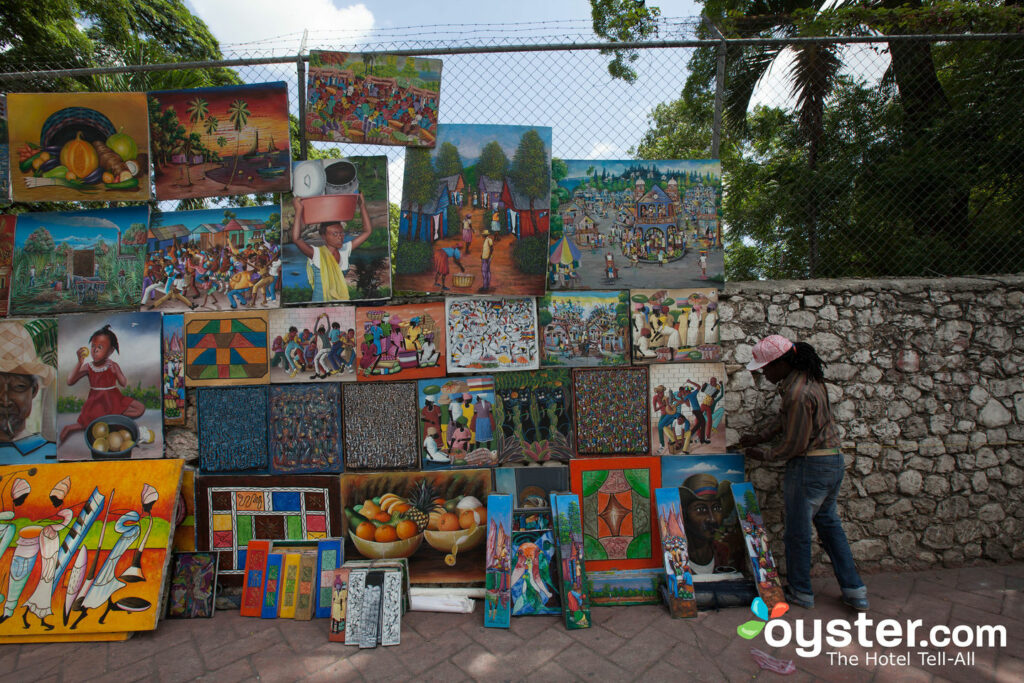
Yes, there are challenges when visiting a place like Haiti. However, that is precisely what Oyster.com investigator Micah Rubin found so fascinating about his recent visit to the country. “A huge plus of traveling there is feeling like you’re in a destination waiting to be discovered,” he says. “For me, as a traveler, I want an authentic experience that’s a little rough around the edges. In Haiti, it’s possible and rewarding to meet locals and learn more about their lives and culture.”
It’s also worth noting that despite Haiti’s reputation for instability, very few travelers are crime victims. A 2013 study conducted by the Igarape Institute , a Brazil-based think tank that advocates for sustainable development, found that only around three percent of travelers were victims of crime, the vast majority of which were petty thefts. Echoing our own investigator’s experience, the study also found that travelers didn’t put the beaches or fancy shopping trips at the top of their list, but that “interactions with ordinary Haitian residents” were the biggest reward of a trip to Haiti.
According to Godefroy, most visitors to Haiti head to five areas: Port-au-Prince , Cote des Arcadins, Cap Haitien, the Kenscoff Mountains, and the town of Jacmel . That makes for an excitingly diverse array of things to do for travelers who don’t mind stepping outside traditionally comfortable notions of travel. For instance, Port-au-Prince is a frenetically paced city that’s home to sights like the jaw-droppingly sprawling Iron Market, the Musee du Pantheon National Haitien (which holds the anchor from Christopher Columbus’ ship, the Santa Maria), and the wealthy suburb of Petionville, where high-end shopping, galleries, and restaurants sit side by side.
Quiet and calm can also be found here. Cote des Arcadins — a strip of small fishing towns, all-inclusive resorts, and stunning beaches — is only an hour or two northwest of Port-au-Prince. To the south, the historic town of Jacmel, which was originally established in the 16th century, was designated a UNESCO Creative City in 2014 to commemorate its ongoing cultural contributions and preservation of artistic traditions in the wake of the 2010 earthquake. There are also destinations like Les Cayes and Ile-a-Vache , which — until Hurricane Matthew struck — were seeing influxes of tourists drawn to the laid-back pace of life and hidden beaches. Even in the wake of the hurricane, most hotels on Ile-a-Vache are already open, including Port Morgan and the Abaka Bay Resort .
Challenges and Ethical Questions Persist
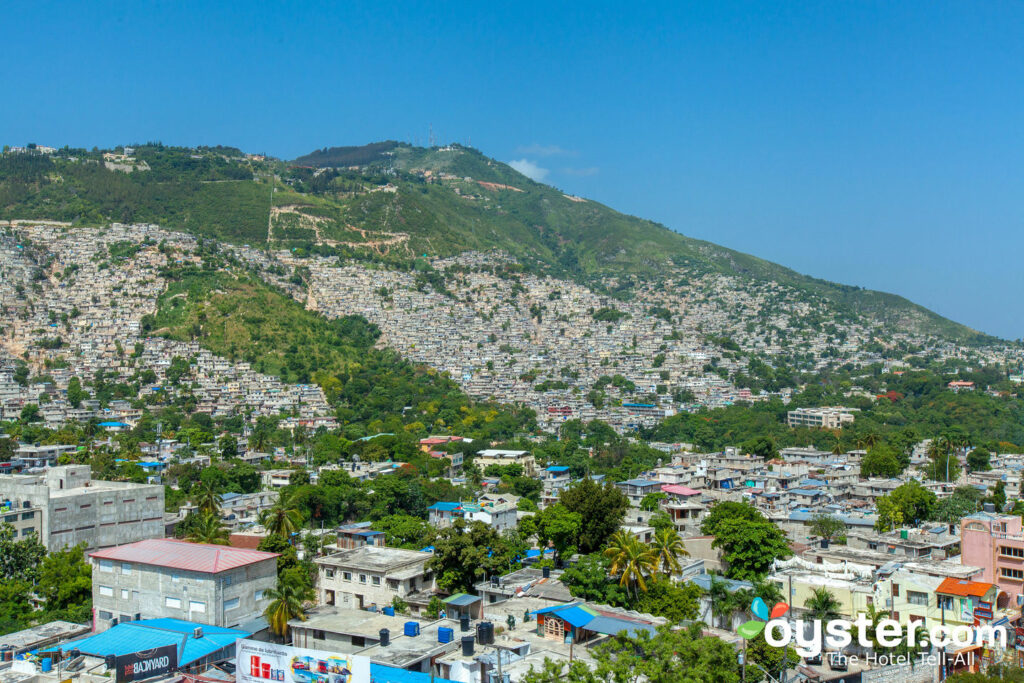
Views of Port-au-Prince hillsides from the Occidental Royal Oasis
While Haiti has plenty of appeal, a trip there isn’t without major challenges, both logistical and ethical. According to Regine Godefroy, infrastructure is constantly being developed to connect tourist areas with population centers. However, even with ongoing investment, our investigator, Micah Rubin, found getting around to be challenging. “Roads are bumpy and, at times, traffic is terrible — especially in Port-au-Prince,” he reveals. Political instability can also play a major role in navigating the country. “Protests are a regular occurrence and roads are blockaded,” he says. “It’s a good idea — if driving — to know the language well enough to stay updated on their schedule (yes — protests are announced in advance).”
The situation has historically been volatile enough to disrupt the travel, which contributed over $500 million to Haiti’s economy as of 2014, according to the World Tourism Organization . In January 2016, “USA Today” reported that Royal Caribbean actually had to cancel stops at Labadee due to protests in advance of national elections. A similar situation occurred in the early ’90s, when cruise visits to the island ceased for four years, according to the “Miami Herald .”
Travelers should also be prepared to witness the devastation wrought by rampant income inequality, which is especially prevalent in the capital. “Economic disparity is profoundly visible in Port-au-Prince,” Rubin says. The Igarape Institute’s study notes that nearly one-fifth of travelers reported that the impacts of economic disparity were prevalent during their visit.
While international visits to Haiti are on the rise, the Igarape study reveals that nearly 70 percent of travelers to Haiti are members of the Haitian diaspora or aid workers. Within the latter camp, debate persists over just how beneficial voluntourism can be within a nation that often lacks enough supplies to feed, clothe, and shelter its own citizens. In Haiti, this can play out in unfortunate ways. The global voluntourism industry is worth up to two billion dollars per year, according to a sustainable tourism expert at Virginia Tech cited by Reuters . Unfortunately, very little of that reaches actual communities in need. In Haiti, this plays out in especially troubling ways, and writers have acknowledged that house-building initiatives by visitors staying for a week or two after the 2010 earthquake did nothing to alter the persistent effects of multi-generational poverty.
There are also some warning signs that the road to economic stability through tourism might not be so easy to achieve. According to TripAdvisor data, the growth in travelers searching for travel information on Haiti has been declining month-over-month since early 2015. As of this fall, hotel queries are down 15 percent over last year. And as Foreign Policy reveals , there are deeply troubling effects of overzealous development in the country, and accusations of government land grabs in favor of hotel development on Ile-a-Vache have ended up in lawsuits and forced displacement.

Despite Setbacks, Haiti Is Open for Business
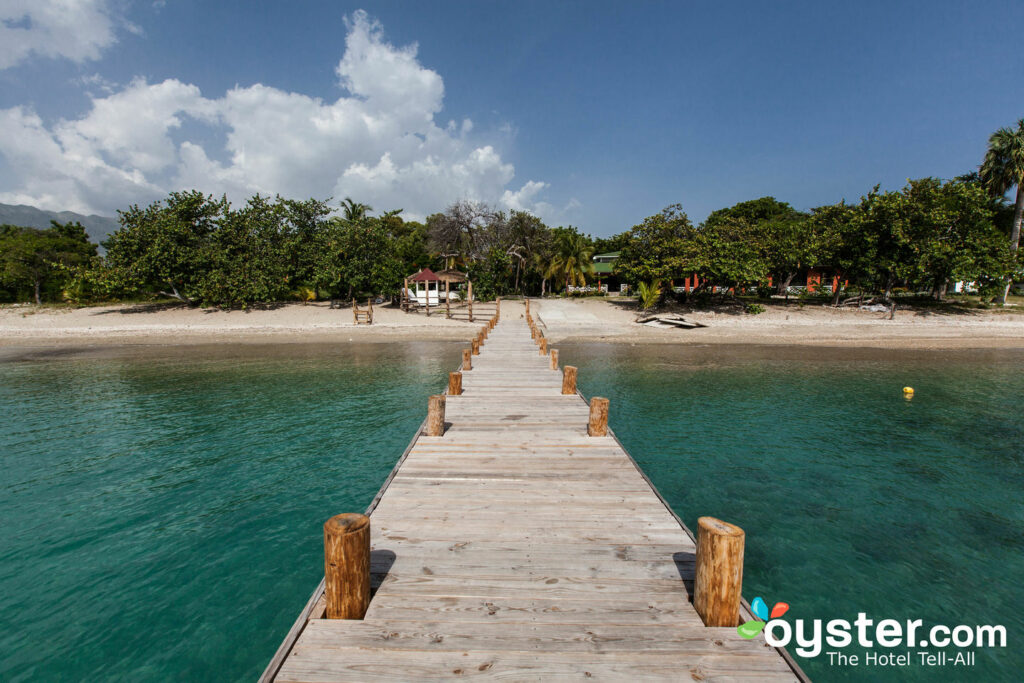
The pier and beach at Royal Decameron Indigo Beach Resort & Spa , Cote des Arcadins
The one thing that is clear is that many Haitians are eager for tourists to come. When we spoke with Madame Jean-Louis of the Abaka Bay Resort in the wake of Hurricane Matthew, she wanted to make it clear that the resort was up and running within a week of the hurricane’s landfall. The same is true for its Ile-a-Vache neighbor, Port Morgan. Still, other parts of that region were not so lucky. In fact, much of the touristic development in Haiti seems to have a dual-edged nature for the time being. For all of the controversy surrounding Royal Caribbean’s choice to port in this impoverished nation, the company does partake in a number of development projects, including funding local infrastructure projects through the Pan American Development Foundation as well as establishing a 300-student school in Labadee.
When asked what she wants potential visitors to Haiti to know, Regine Godefroy insisted upon Haiti’s unique history. “Haiti is alive with beautiful white sand beaches, art, music, history, great cuisine and culture dating back 2,000 years,” she tells us. “Our mountainous country is an opportunity to see and capture the most breathtaking views and sunsets available in the Caribbean.”
Related Stories:
- 5 Caribbean Islands (Generally) Not Hit by Hurricanes
- 5 Health Disasters That Are Resurfacing Around the World
- After the Disaster: How These Popular Tourist Destinations Are Faring
All products are independently selected by our writers and editors. If you buy something through our links, Oyster may earn an affiliate commission.
Top Stories

- Travel Tips
Top 11 Las Vegas Hotels on the Strip for Every Type of Traveler
By Christina Vercelletto

12 Things to Ask for When You Check Into Your Hotel Room
By Toby Orton

- Travel Safety
The 11 Safest Travel Destinations in the Caribbean Right Now
By Lilly LeClair

7 Amazing Mother-Daughter Trips to Take This Year
By Megan Johnson
- Skip to main content
- Skip to "About this site"
Language selection
Search travel.gc.ca.
Help us to improve our website. Take our survey !
COVID-19: travel health notice for all travellers
Haiti travel advice
Latest updates: Safety and security - updated information on assisted departure options
Last updated: April 8, 2024 20:22 ET
On this page
Safety and security, entry and exit requirements, laws and culture, natural disasters and climate, haiti - avoid all travel.
The security situation remains volatile in Haiti. You should consider leaving the country by commercial means if you can do so safely.
Back to top
Security situation in Haiti
The security situation remains extremely volatile in Haiti.
On March 3, 2024, the government of Haiti declared a state of emergency in Ouest Department, including in Port-au-Prince, in response to gang violence and the deteriorating security situation. There are frequent clashes between gangs and security forces. Kidnappings, robberies, and violent crime are increasing.
A nightly curfew is in effect in Ouest Department. You must stay indoors while the curfew is in effect. There are exceptions for certain professions, including medical personnel and journalists carrying official identification.
While the state of emergency and curfew are in effect:
- follow the instructions of local authorities
- always cooperate with police officers
- carry valid ID at all times and be prepared for various checkpoints
- monitor local news to stay informed on the current situation
Your personal safety is at risk if you are currently in Haiti. You should consider leaving the country by commercial means if you can do so safely.
There are two international airports in the country which can be difficult to access due to the highly volatile security situation. The Toussaint Louverture International Airport is closed. The Cap Haitian International Airport is operational.
We strongly advise against any road travel from Port-au-Prince to Cap-Haitien, given the presence of gangs and a highly volatile security situation.
Avoid all travel to Haiti. If you are in Haiti despite this advisory:
- shelter in a safe place until the situation has stabilized
- consider leaving the country if there’s a safe means to do so
- ensure that you have essential supplies, including food, water and fuel
- ensure that your passport and other travel documents are up-to-date and secure at all times
- limit your movements, if you are unable to shelter in place
- avoid crossing road blockades, even if they appear unattended
- allow extra time to reach your destination
- be aware of your surroundings at all times
- maintain a low profile when going outside
- don't show signs of affluence
- register or update your personal information through the Registration of Canadians Abroad service and encourage other Canadian citizens in Haiti to do so
Declaration of the state of emergency – Ministry of Communication of Haiti (in French)
Assisted departure options
Canadian officials continue to monitor and assess the security situation very closely and work in coordination with allies to help Canadians in Haiti.
Canadian citizens in Haiti wishing to leave should sign up to the Registration of Canadians Abroad service and should contact Global Affairs Canada's 24/7 Emergency Watch and Response Centre to discuss their situation.
Border closure with the Dominican Republic
On March 5, 2024, the Government of the Dominican Republic closed its air border with Haiti. Land and sea borders between the two countries remain closed to travellers.
The Embassy of Canada to Haiti, in Port-au-Prince, cannot help you enter the Dominican Republic from Haiti.
Crime rates are high in large centres such as downtown Port-au-Prince, where armed gangs operate, as well as near the border with the Dominican Republic.
The number of violent incidents has been increasing since 2020, especially kidnappings in and around Port-au-Prince.
There has also been an increase in home invasions. These incidents generally occur in middle-class neighbourhoods, but have increased in number in affluent neighbourhoods in Port-au-Prince and outside Pétion-Ville.
Petty crime, such as pickpocketing and purse snatching, also occurs.
Criminality increases in the periods leading up to the holiday season in December, Carnival in February or March and the beginning of the school year in late August or early September.
Foreigners are viewed as wealthy and may arouse envy. To avoid becoming a target:
- don’t show signs of affluence
- avoid using your smartphone or camera in public
- be aware of your surroundings
- ensure that your personal belongings, including your passport and other travel documents, are secure at all times
- remain cautious with new acquaintances offering friendship or hospitality
- never walk alone and avoid travelling after nightfall
Greater Port-au-Prince area
Several areas in greater Port-au-Prince continue to be dangerous due to criminal activity and kidnappings. Local authorities may have difficulties assisting during an emergency in these areas:
- Artibonite Central
- Carrefour Drouillard
- Champs-de-Mars
- Cité Soleil
- Croix-des-Bouquets
- Downtown Port-au-Prince
- Portail Léogane
- Road to the airport
- Toussant Brave
Police presence is not guaranteed in these areas and your personal safety might be at risk. Due to the local environment, security forces may not be able to provide emergency assistance in due time.
If you must travel to these areas, it’s imperative that you take appropriate security precautions:
- be vigilant at all times when moving about the city, towns and country
- ensure that your local contacts know when to expect you and your travel plans within these areas
- ask your local contacts to guide you in your travels
- keep windows closed and doors locked when travelling by car
- never use public transport of any kind
- ask the organizations, institutes or hosts that are taking care of you about the latest updates on the region to which you are travelling, since the security situation can change at any moment
- avoid going out after nightfall
- follow the advice of local authorities
Pétion-Ville
Armed robberies occur regularly in Pétion-Ville. In most cases, armed thieves on motorcycles attack their victims in broad daylight. Attacks have been increasing, particularly against motorists. They usually occur in traffic jams during peak hours.
- Be vigilant at all times while travelling
- Keep windows closed and doors locked when travelling by car
Main highways and roads
Armed gangs have set up roadblocks to commit robberies and demand payments along Route Nationale 2 from Martissant to Miragoane.
Armed gangs are fighting to control the main highways connecting Port-au-Prince to northern departments.
If you must drive:
- limit your movements
Toussaint Louverture International Airport
Thieves try to distract foreigners to steal their passports at Toussaint Louverture International Airport.
- Be cautious when claiming your luggage upon arrival
- Keep your valuables and identification on you
- Have your local contacts arrange for your pick-up from the airport
- Carry only small amounts of cash
Several shooting incidents have also occurred along the road to the airport. Gangs have committed armed robberies, particularly between Delmas 33 and the airport.
- Don’t resist if you’re threatened by robbers
- Be extremely vigilant when leaving the airport
Border with the Dominican Republic
The security environment is highly volatile at the border between Haiti and the Dominican Republic.
Criminal activities are widespread near the border with the Dominican Republic. Armed gangs operate along the border controlling many of the roads leading to the border.
Border areas with the Dominican Republic are subject to gang operations, including the following areas:
- Ouanaminthe
Robberies in bank areas
Some criminals wait near banks, watching clients, and attempt to rob them when they leave.
There is also a higher risk of robbery from individuals using bank ATMs.
- Be extremely vigilant when entering or leaving a bank
- Only use ATMs inside a hotel or supermarket
- Deal directly with a teller if you are at a bank
- Avoid carrying large sums of money
Kidnappings are common in Haiti.
Kidnappers target both local people and foreigners, including dual citizens who live or travel in Haiti, regardless of rank or social class. Since September 2020, hundreds of Canadians and other foreign nationals have been abducted. Missionaries, aid workers and children can become victims. Most of the victims are released in exchange for ransom. In some exceptional cases, however, victims have disappeared or have been killed.
- Remain alert to small groups of loiterers, especially near your residence
- Keep doors and windows secure at all times
- Instruct domestic staff to permit into your home only pre-authorized visitors whose identities have been verified
- Keep all visitors under close scrutiny
- Remain extremely vigilant wherever you are in the country
Demonstrations
Demonstrations and civil unrest take place frequently.
Due to ongoing political instability, some demonstrations have turned violent. Protesters have set up roadblocks across the country and blocked the access to the airport. In those circumstances, water, food and fuel shortages could occur.
Even peaceful demonstrations can turn violent at any time. They can also lead to disruptions to traffic and public transportation.
- Avoid areas where demonstrations and large gatherings are taking place
- Follow the instructions of local authorities
- Monitor local media for information on ongoing demonstrations
Mass gatherings (large-scale events)
Women’s safety
Crimes committed against women frequently occur in Haiti. Reports of rape and assault against women and children have increased. Attackers sometimes act in groups.
Advice for women travellers
Service outages and supply shortages
Power outages are frequent, and shortages of essential supplies such as water and fuel occur.
Ensure that you plan adequately in case of outages and supply shortages.
Road safety
Road conditions and road safety are poor throughout the country due to:
- narrow and poorly maintained roads
- insufficient traffic signs, traffic lights and road markings
- high rates of driving while impaired, with the vehicle’s lights off
- poor vehicle maintenance
- inadequate street lighting
Heavy rains can hamper overland travel and reduce the provision of essential services. Roads may become impassable and bridges damaged.
If you need to travel within Haiti, consider hiring a driver through a reputable agency or hotel. If you must drive:
- always keep your fuel tanks at least half full, as disruptions of fuel supplies are frequent
- always carry a cell phone and a list of emergency contact numbers with you, as roadside assistance services are deficient
- keep in mind that cell phone coverage may be intermittent in some rural areas
- avoid driving at night or in bad weather, even in the city
- be cautious about abandoned vehicle beside the road
- watch out for pedestrians and stray animals on the road
Public transportation
Public transportation is unsafe and unreliable. Drivers don’t always respect traffic laws. Vehicles are often in poor condition or overloaded, which leads to serious accidents involving injuries and sometimes death.
You should avoid all public transportation in Haiti, but most specifically trucks converted into buses, known as “tap taps.”
Ferry accidents occur and are often caused by poor safety practices or extreme weather conditions.
You should avoid ferry travel. If you choose to travel by ferry:
- make sure the vessel you are boarding is carrying appropriate safety equipment
- make sure that life jackets are provided for all passengers and accessible at all times
- avoid boarding vessels that appear overloaded or unseaworthy
- verify the safety standards of ferries with your tour operator
We do not make assessments on the compliance of foreign domestic airlines with international safety standards.
Information about foreign domestic airlines
Every country or territory decides who can enter or exit through its borders. The Government of Canada cannot intervene on your behalf if you do not meet your destination’s entry or exit requirements.
We have obtained the information on this page from the Haitian authorities. It can, however, change at any time.
Verify this information with the Foreign Representatives in Canada .
Entry requirements vary depending on the type of passport you use for travel.
Before you travel, check with your transportation company about passport requirements. Its rules on passport validity may be more stringent than the country’s entry rules.
Regular Canadian passport
Your passport must be valid for the expected duration of your stay in Haiti.
Passport for official travel
Different entry rules may apply.
Official travel
Passport with “X” gender identifier
While the Government of Canada issues passports with an “X” gender identifier, it cannot guarantee your entry or transit through other countries. You might face entry restrictions in countries that do not recognize the “X” gender identifier. Before you leave, check with the closest foreign representative for your destination.
Other travel documents
Different entry rules may apply when travelling with a temporary passport or an emergency travel document. Before you leave, check with the closest foreign representative for your destination.
Useful links
- Foreign Representatives in Canada
- Canadian passports
Tourist visa: not required for stays up to 90 days Business visa: not required Student visa: required Work permit: required
Residency permit
You must obtain a residency permit if you intend to stay for 90 days or more. This requirement doesn’t apply to Canadians of Haitian origin.
If you plan to extend your stay beyond 90 days and are a Canadian of non-Haitian origin, you must apply to the Haitian Immigration Service before the 90 days have expired. If you fail to do so, you will need an exit visa to leave the country.
Canadian investors, exporters/importers and workers must apply to the Haitian Immigration Service for a residency permit through their employer for stays of 6 months or more. You must obtain this document before leaving Canada.
How to obtain a visa - Embassy of Haiti in Canada (in French)
Other entry requirements
Customs officials may ask you to show them a return or onward ticket and proof of sufficient funds to cover your stay.
Children and travel
Learn more about travelling with children .
Yellow fever
Learn about potential entry requirements related to yellow fever (vaccines section).
Relevant Travel Health Notices
- Global Measles Notice - 13 March, 2024
- Zika virus: Advice for travellers - 31 August, 2023
- COVID-19 and International Travel - 13 March, 2024
This section contains information on possible health risks and restrictions regularly found or ongoing in the destination. Follow this advice to lower your risk of becoming ill while travelling. Not all risks are listed below.
Consult a health care professional or visit a travel health clinic preferably 6 weeks before you travel to get personalized health advice and recommendations.
Routine vaccines
Be sure that your routine vaccinations , as per your province or territory , are up-to-date before travelling, regardless of your destination.
Some of these vaccinations include measles-mumps-rubella (MMR), diphtheria, tetanus, pertussis, polio, varicella (chickenpox), influenza and others.
Pre-travel vaccines and medications
You may be at risk for preventable diseases while travelling in this destination. Talk to a travel health professional about which medications or vaccines may be right for you, based on your destination and itinerary.
Yellow fever is a disease caused by a flavivirus from the bite of an infected mosquito.
Travellers get vaccinated either because it is required to enter a country or because it is recommended for their protection.
- There is no risk of yellow fever in this country.
Country Entry Requirement*
- Proof of vaccination is required if you are coming from a country where yellow fever occurs.
Recommendation
- Vaccination is not recommended.
- Discuss travel plans, activities, and destinations with a health care professional.
- Contact a designated Yellow Fever Vaccination Centre well in advance of your trip to arrange for vaccination.
About Yellow Fever
Yellow Fever Vaccination Centre
* It is important to note that country entry requirements may not reflect your risk of yellow fever at your destination. It is recommended that you contact the nearest diplomatic or consular office of the destination(s) you will be visiting to verify any additional entry requirements.
There is a risk of hepatitis A in this destination. It is a disease of the liver. People can get hepatitis A if they ingest contaminated food or water, eat foods prepared by an infectious person, or if they have close physical contact (such as oral-anal sex) with an infectious person, although casual contact among people does not spread the virus.
Practise safe food and water precautions and wash your hands often. Vaccination is recommended for all travellers to areas where hepatitis A is present.
Measles is a highly contagious viral disease. It can spread quickly from person to person by direct contact and through droplets in the air.
Anyone who is not protected against measles is at risk of being infected with it when travelling internationally.
Regardless of where you are going, talk to a health care professional before travelling to make sure you are fully protected against measles.
Hepatitis B is a risk in every destination. It is a viral liver disease that is easily transmitted from one person to another through exposure to blood and body fluids containing the hepatitis B virus. Travellers who may be exposed to blood or other bodily fluids (e.g., through sexual contact, medical treatment, sharing needles, tattooing, acupuncture or occupational exposure) are at higher risk of getting hepatitis B.
Hepatitis B vaccination is recommended for all travellers. Prevent hepatitis B infection by practicing safe sex, only using new and sterile drug equipment, and only getting tattoos and piercings in settings that follow public health regulations and standards.
Coronavirus disease (COVID-19) is an infectious viral disease. It can spread from person to person by direct contact and through droplets in the air.
It is recommended that all eligible travellers complete a COVID-19 vaccine series along with any additional recommended doses in Canada before travelling. Evidence shows that vaccines are very effective at preventing severe illness, hospitalization and death from COVID-19. While vaccination provides better protection against serious illness, you may still be at risk of infection from the virus that causes COVID-19. Anyone who has not completed a vaccine series is at increased risk of being infected with the virus that causes COVID-19 and is at greater risk for severe disease when travelling internationally.
Before travelling, verify your destination’s COVID-19 vaccination entry/exit requirements. Regardless of where you are going, talk to a health care professional before travelling to make sure you are adequately protected against COVID-19.
The best way to protect yourself from seasonal influenza (flu) is to get vaccinated every year. Get the flu shot at least 2 weeks before travelling.
The flu occurs worldwide.
- In the Northern Hemisphere, the flu season usually runs from November to April.
- In the Southern Hemisphere, the flu season usually runs between April and October.
- In the tropics, there is flu activity year round.
The flu vaccine available in one hemisphere may only offer partial protection against the flu in the other hemisphere.
The flu virus spreads from person to person when they cough or sneeze or by touching objects and surfaces that have been contaminated with the virus. Clean your hands often and wear a mask if you have a fever or respiratory symptoms.
Malaria is a serious and sometimes fatal disease that is caused by parasites spread through the bites of mosquitoes.
Malaria is a risk to travellers to this destination. Antimalarial medication is recommended for most travellers to this destination and should be taken as recommended. Consult a health care professional or visit a travel health clinic before travelling to discuss your options. It is recommended to do this 6 weeks before travel, however, it is still a good idea any time before leaving. Protect yourself from mosquito bites at all times:
- Cover your skin and use an approved insect repellent on uncovered skin.
- Exclude mosquitoes from your living area with screening and/or closed, well-sealed doors and windows.
- Use insecticide-treated bed nets if mosquitoes cannot be excluded from your living area.
- Wear permethrin-treated clothing.
If you develop symptoms similar to malaria when you are travelling or up to a year after you return home, see a health care professional immediately. Tell them where you have been travelling or living.
In this destination, rabies is commonly carried by dogs and some wildlife, including bats. Rabies is a deadly disease that spreads to humans primarily through bites or scratches from an infected animal. While travelling, take precautions , including keeping your distance from animals (including free-roaming dogs), and closely supervising children.
If you are bitten or scratched by a dog or other animal while travelling, immediately wash the wound with soap and clean water and see a health care professional. In this destination, rabies treatment may be limited or may not be available, therefore you may need to return to Canada for treatment.
Before travel, discuss rabies vaccination with a health care professional. It may be recommended for travellers who are at high risk of exposure (e.g., occupational risk such as veterinarians and wildlife workers, children, adventure travellers and spelunkers, and others in close contact with animals).
Safe food and water precautions
Many illnesses can be caused by eating food or drinking beverages contaminated by bacteria, parasites, toxins, or viruses, or by swimming or bathing in contaminated water.
- Learn more about food and water precautions to take to avoid getting sick by visiting our eat and drink safely abroad page. Remember: Boil it, cook it, peel it, or leave it!
- Avoid getting water into your eyes, mouth or nose when swimming or participating in activities in freshwater (streams, canals, lakes), particularly after flooding or heavy rain. Water may look clean but could still be polluted or contaminated.
- Avoid inhaling or swallowing water while bathing, showering, or swimming in pools or hot tubs.
Cholera is a risk in parts of this country. Most travellers are at very low risk.
To protect against cholera, all travellers should practise safe food and water precautions .
Travellers at higher risk of getting cholera include those:
- visiting, working or living in areas with limited access to safe food, water and proper sanitation
- visiting areas where outbreaks are occurring
Vaccination may be recommended for high-risk travellers, and should be discussed with a health care professional.
Travellers' diarrhea is the most common illness affecting travellers. It is spread from eating or drinking contaminated food or water.
Risk of developing travellers' diarrhea increases when travelling in regions with poor standards of hygiene and sanitation. Practise safe food and water precautions.
The most important treatment for travellers' diarrhea is rehydration (drinking lots of fluids). Carry oral rehydration salts when travelling.
Typhoid is a bacterial infection spread by contaminated food or water. Risk is higher among children, travellers going to rural areas, travellers visiting friends and relatives or those travelling for a long period of time.
Travellers visiting regions with a risk of typhoid, especially those exposed to places with poor sanitation, should speak to a health care professional about vaccination.
Insect bite prevention
Many diseases are spread by the bites of infected insects such as mosquitoes, ticks, fleas or flies. When travelling to areas where infected insects may be present:
- Use insect repellent (bug spray) on exposed skin
- Cover up with light-coloured, loose clothes made of tightly woven materials such as nylon or polyester
- Minimize exposure to insects
- Use mosquito netting when sleeping outdoors or in buildings that are not fully enclosed
To learn more about how you can reduce your risk of infection and disease caused by bites, both at home and abroad, visit our insect bite prevention page.
Find out what types of insects are present where you’re travelling, when they’re most active, and the symptoms of the diseases they spread.
There is a risk of chikungunya in this country. The risk may vary between regions of a country. Chikungunya is a virus spread through the bite of an infected mosquito. Chikungunya can cause a viral disease that typically causes fever and pain in the joints. In some cases, the joint pain can be severe and last for months or years.
Protect yourself from mosquito bites at all times. There is no vaccine available for chikungunya.
- In this country, dengue is a risk to travellers. It is a viral disease spread to humans by mosquito bites.
- Dengue can cause flu-like symptoms. In some cases, it can lead to severe dengue, which can be fatal.
- The level of risk of dengue changes seasonally, and varies from year to year. The level of risk also varies between regions in a country and can depend on the elevation in the region.
- Mosquitoes carrying dengue typically bite during the daytime, particularly around sunrise and sunset.
- Protect yourself from mosquito bites . There is no vaccine or medication that protects against dengue.
Zika virus is a risk in this country.
Zika virus is primarily spread through the bite of an infected mosquito. It can also be sexually transmitted. Zika virus can cause serious birth defects.
During your trip:
- Prevent mosquito bites at all times.
- Use condoms correctly or avoid sexual contact, particularly if you are pregnant.
If you are pregnant or planning a pregnancy, you should discuss the potential risks of travelling to this destination with your health care provider. You may choose to avoid or postpone travel.
For more information, see Zika virus: Pregnant or planning a pregnancy.
Animal precautions
Some infections, such as rabies and influenza, can be shared between humans and animals. Certain types of activities may increase your chance of contact with animals, such as travelling in rural or forested areas, camping, hiking, and visiting wet markets (places where live animals are slaughtered and sold) or caves.
Travellers are cautioned to avoid contact with animals, including dogs, livestock (pigs, cows), monkeys, snakes, rodents, birds, and bats, and to avoid eating undercooked wild game.
Closely supervise children, as they are more likely to come in contact with animals.
Person-to-person infections
Stay home if you’re sick and practise proper cough and sneeze etiquette , which includes coughing or sneezing into a tissue or the bend of your arm, not your hand. Reduce your risk of colds, the flu and other illnesses by:
- washing your hands often
- avoiding or limiting the amount of time spent in closed spaces, crowded places, or at large-scale events (concerts, sporting events, rallies)
- avoiding close physical contact with people who may be showing symptoms of illness
Sexually transmitted infections (STIs) , HIV , and mpox are spread through blood and bodily fluids; use condoms, practise safe sex, and limit your number of sexual partners. Check with your local public health authority pre-travel to determine your eligibility for mpox vaccine.
Tuberculosis is an infection caused by bacteria and usually affects the lungs.
For most travellers the risk of tuberculosis is low.
Travellers who may be at high risk while travelling in regions with risk of tuberculosis should discuss pre- and post-travel options with a health care professional.
High-risk travellers include those visiting or working in prisons, refugee camps, homeless shelters, or hospitals, or travellers visiting friends and relatives.
HIV (Human Immunodeficiency Virus) is a virus that attacks and impairs the immune system, resulting in a chronic, progressive illness known as AIDS (Acquired Immunodeficiency Syndrome).
High risk activities include anything which puts you in contact with blood or body fluids, such as unprotected sex and exposure to unsterilized needles for medications or other substances (for example, steroids and drugs), tattooing, body-piercing or acupuncture.
Medical services and facilities
Health care is inadequate throughout the country. There are few hospitals, and many are closed. Clinics and hospitals that are open are easily overwhelmed. Hospital services can be disrupted by gang violence
Ambulances are also limited and may not have the basic required medical supplies onboard. As a result, emergency response is not guaranteed.
Physicians and hospitals generally expect immediate cash payment for care even if you have proof of valid travel health insurance. You will have to pay the full amount of the bill before your departure.
Medications sold in Haiti may be of inferior quality to those available in Canada. Pharmacies may carry expired medications while some medications may simply not be available.
Bring a sufficient supply of medications for the duration of your stay.
Medical evacuation can be very expensive and you may need it in case of serious illness or injury.
Make sure you get travel insurance that includes coverage for medical evacuation and hospital stays.
Travel health and safety
Keep in Mind...
The decision to travel is the sole responsibility of the traveller. The traveller is also responsible for his or her own personal safety.
Be prepared. Do not expect medical services to be the same as in Canada. Pack a travel health kit , especially if you will be travelling away from major city centres.
You must abide by local laws.
Learn about what you should do and how we can help if you are arrested or detained abroad .
Legal fees can be very high and judicial procedures are slow. Some Canadians have experienced an over a year detention period before being sent to trial. Prison conditions are extremely difficult. Penal facilities are overcrowded, unsanitary and under-resourced.
Penalties for possession, use or trafficking of illegal drugs are severe. Convicted offenders can expect lengthy legal proceedings, heavy jail sentences and fines.
Drugs, alcohol and travel
Dual citizenship
Dual citizenship is legally recognized in Haiti.
If you are a Canadian citizen, but also a citizen of Haiti, our ability to offer you consular services may be limited while you're there. You may also be subject to different entry/exit requirements .
Travellers with dual citizenship
International Child Abduction
The Hague Convention on the Civil Aspects of International Child Abduction is an international treaty. It can help parents with the return of children who have been removed to or retained in certain countries in violation of custody rights. It does not apply between Canada and Haiti.
If your child was wrongfully taken to, or is being held in Haiti by an abducting parent:
- act as quickly as you can
- consult a lawyer in Canada and in Haiti to explore all the legal options for the return of your child
- report the situation to the nearest Canadian government office abroad or to the Vulnerable Children’s Consular Unit at Global Affairs Canada by calling the Emergency Watch and Response Centre.
If your child was removed from a country other than Canada, consult a lawyer to determine if The Hague Convention applies.
Be aware that Canadian consular officials cannot interfere in private legal matters or in another country’s judicial affairs.
- International Child Abduction: A Guidebook for Left-Behind Parents
- Travelling with children
- Canadian embassies and consulates by destination
- Emergency Watch and Response Centre
2SLGBTQI+ travellers
Haitian law does not prohibit sexual acts between individuals of the same sex.
However, 2SLGBTQI+ travellers could be discriminated against based on their sexual orientation, gender identity, gender expression or sex characteristics.
Travel and your sexual orientation, gender identity, gender expression and sex characteristics
In order to fight insecurity, local authorities have temporarily forbidden to drive vehicles with tinted windows throughout the country.
You may use your Canadian driver’s licence to drive in Haiti for up to 3 months. For stays of 3 months or more, you will require a Haitian driver’s permit.
You should carry an international driving permit.
International Driving Permit
Photography
People may feel exploited or insulted by being subjects of photography in poor or urban areas.
Obtain permission before photographing individuals.
Donations entering the country are subject to import rules. They could be seized and taxed in accordance with local legislation. This includes:
- new or used material goods
- personal care products
- medications
Contact the Embassy of the Republic of Haiti or one of its consulates before sending goods to Haiti.
The currency in Haiti is the Haitian gourde (HTG).
Although all prices should be in gourde since March 2018, they are still often quoted in Haitian dollars (5 gourdes = 1 Haitian dollar) or in U.S. dollars.
Canadian currency is not accepted. Most leading hotels accept major credit cards. You can also use your Canadian bank cards to access funds from some ATMs, but the withdrawal limit is much lower than in Canada. Haitian ATMs are unreliable and you should not depend upon them in emergency situations.
Make sure to have sufficient cash in case you’re unable to access an ATM or use your credit card.
Hurricane season
Hurricanes usually occur from mid-May to the end of November. During this period, even small tropical storms can quickly develop into major hurricanes.
These severe storms can put you at risk and hamper the provision of essential services.
If you decide to travel to Haiti during the hurricane season:
- know that you expose yourself to serious safety risks
- be prepared to change your travel plans on short notice, including cutting short or cancelling your trip
- stay informed of the latest regional weather forecasts
- carry emergency contact information for your airline or tour operator
- follow the advice and instructions of local authorities
- Tornadoes, cyclones, hurricanes, typhoons and monsoons
- Large-scale emergencies abroad
- Active storm tracking and hurricane watches and warnings - United States National Hurricane Center
Rainy season
The rainy season extends from April to June and from October to November. It can lead to severe flooding.
Seasonal flooding can hamper overland travel and reduce the provision of essential services. Roads may become impassable due to mudslides and landslides. Bridges, buildings, and infrastructure may be damaged.
- Monitor local media for the latest updates, including those on road conditions
- Stay away from flooded areas
- Monitor weather reports
- Follow the instructions of local authorities, including evacuation orders
Earthquakes and tsunamis
Haiti is located in an active seismic zone. Earthquakes occur. Tsunamis can also affect coastal areas.
A tsunami can occur within minutes of a nearby earthquake. However, the risk of tsunami can remain for several hours following the first tremor. If you’re staying on the coast, familiarize yourself with the region’s evacuation plans in the event of a tsunami warning.
In the event of an earthquake:
- monitor local media for the latest information
- Earthquakes - What to Do?
- Tsunami alerts - U.S. Tsunami Warning System
- Latest earthquakes - U.S. Geological Survey
Local services
In case of emergency, dial 114.
Consular assistance
Temporary closure of the embassy of canada to haiti, in port-au-prince.
The Embassy of Canada to Haiti, in Port-au-Prince, is closed temporarily to the public due to the unpredictable security situation. Consular services will be provided remotely.
For emergency consular assistance, call the Embassy of Canada to Haiti, in Port-au-Prince, and follow the instructions. At any time, you may also call the Emergency Watch and Response Centre in Ottawa.
The decision to travel is your choice and you are responsible for your personal safety abroad. We take the safety and security of Canadians abroad very seriously and provide credible and timely information in our Travel Advice to enable you to make well-informed decisions regarding your travel abroad.
The content on this page is provided for information only. While we make every effort to give you correct information, it is provided on an "as is" basis without warranty of any kind, expressed or implied. The Government of Canada does not assume responsibility and will not be liable for any damages in connection to the information provided.
If you need consular assistance while abroad, we will make every effort to help you. However, there may be constraints that will limit the ability of the Government of Canada to provide services.
Learn more about consular services .
Risk Levels
take normal security precautions.
Take similar precautions to those you would take in Canada.
Exercise a high degree of caution
There are certain safety and security concerns or the situation could change quickly. Be very cautious at all times, monitor local media and follow the instructions of local authorities.
IMPORTANT: The two levels below are official Government of Canada Travel Advisories and are issued when the safety and security of Canadians travelling or living in the country or region may be at risk.
Avoid non-essential travel
Your safety and security could be at risk. You should think about your need to travel to this country, territory or region based on family or business requirements, knowledge of or familiarity with the region, and other factors. If you are already there, think about whether you really need to be there. If you do not need to be there, you should think about leaving.
Avoid all travel
You should not travel to this country, territory or region. Your personal safety and security are at great risk. If you are already there, you should think about leaving if it is safe to do so.
Expedia Rewards is now One Key™
Cheap flights to haiti from $69.
Bundle Your Flight + Hotel & Save!
Add a place to stay
Direct flights only
Featured airlines

- trending down icon Be in the know Get alerts if flight prices drop or rise*
- bex rewards loyalty icon Book smarter Save up to 30% on select hotels after you book a flight*
- one key icon Earn twice Earn your airline miles on top of our OneKeyCash Learn about One Key
Top Cities to Visit in Haiti
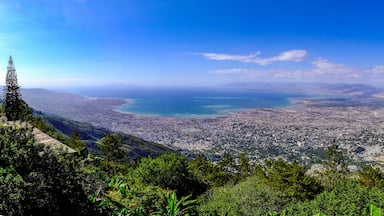
Port-au-Prince
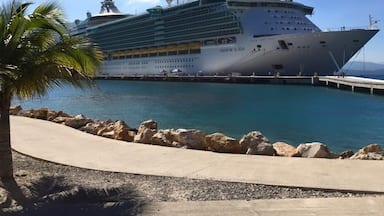
Cap-Haitien
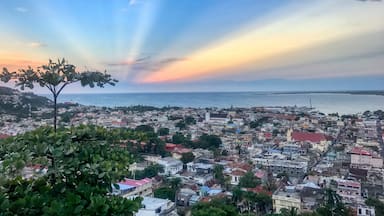
How much is the cheapest flight to Haiti?
Prices were available within the past 7 days and start at $69 for one-way flights and $203 for round trip, for the period specified. Prices and availability are subject to change. Additional terms apply.
About Flying to Haiti
Load up your carry-on, schedule your Haiti flights, and get set for an adventure. We get that preparation is the interesting part when it's finally time to ponder your next getaway. Picking your location, investigating plane tickets, and finding the cool entertainment are all a part of making memories that will last forever. And no matter if you're looking for an action-packed escape with your loved ones or a restful trip in solitude, when you use Expedia to arrange your trip to Haiti, you'll find innumerable ways to personalize your adventure with our sweet offers and simple payment process.
Your Top-Notch Haiti Flight Is Waiting
Whether you're on the hunt for airfare to the country's capital of Port-au-Prince, or would prefer to fly someplace off the beaten path, you're guaranteed to find the ideal destination for your trip here on Expedia. We're devoted to helping you find cheap tickets to this country that won't drain your bank account. We know you want to devote more of your hard-earned money toward exploring the sights and less on the price of your ticket to this unique region. And that's why we provide you with an incredible variety of economical airline tickets, including both round-trip and one-way reservations, to guarantee your Haiti travel plans remain within your budget.
While on your vacation in Haiti, surround yourself in the local culture by tasting regional cuisine and experiencing the outdoor attractions. . No matter where in this country you decide to go, stop by the historic landmarks on your trip, and enjoy panoramas of the most breathtaking areas. It's easy to see why so many adventurers, amateur historians, and travel bugs alike are attracted to this enticing area.
Reserve Your Haiti Holiday Right Away
Expedia aims to save you money and time when securing your tickets to the Haiti, so you can spend your days making the most of your trip and not fretting about draining your bank account. We offer our customers a variety of airlines, airports, and takeoff times, making it simpler for you to reserve your airfare whether you're on the hunt for an overnight flight or a direct flight to a particular airport. We also have an intuitive smartphone booking app, which allows you to arrange your trip whenever it's most convenient for you.
If you have some time to spend away from the office that has nearly arrived, there's never been a better opportunity to take advantage of your flight to Haiti. get your new camera all set for glorious vistas and your tummy for delectable food - it's vacation time! Arrange your journey to Haiti this minute, and get ready to embark on a memorable getaway tomorrow. When it comes to finding flights to Haiti that match your price range and itinerary, look no further than our extensive selection right here. Just type in your perfect travel dates now to see the best discounts on getaways in Haiti.
Here at Expedia, we’re committed to helping you find cheap flights to Haiti that won’t break the bank. We know you want to put more of your hard-earned cash toward exploring the sites and less on the price of your airfare. That’s why we provide you with a vast selection of affordable plane tickets, including roundtrip and one-way reservations, to ensure your Caribbean travel plans remain within your budget. Take advantage of our lowest rates on airfare and have leftover money to spare on your travel adventures.
When it comes to finding flights to Haiti that match your price range and itinerary, look no further than our options right here. We offer a variety of airlines, airports, and flight times making it easier for you to book your airfare. Whether you’re looking for a redeye ticket or a flight to a specific terminal, you’ll find exactly what you need. We also provide a hassle-free mobile booking app, which lets you reserve wherever and whenever is most convenient for you. Book your airfare to Haiti today and get ready to embark on an unforgettable getaway tomorrow.
Haiti Flights Information
Frequently asked questions.
- Spirit Airlines - 52 flights to or near Haiti each month, including 30 flights to Cap-Haitien (CAP-Cap-Haitien Intl.) per month.
- JetBlue Airways - 39 flights to or near Haiti each month, including 39 flights to Port-au-Prince (PAP-Toussaint Louverture Intl.) per month.
- American Airlines - 26 flights to or near Haiti each month, including 26 flights to Port-au-Prince (PAP-Toussaint Louverture Intl.) per month.
- Port-au-Prince (PAP-Toussaint Louverture Intl.) - 86 flights per month.
- Cap-Haitien (CAP-Cap-Haitien Intl.) - 30 flights per month.
- Fort Lauderdale, FL (FLL-Fort Lauderdale - Hollywood Intl.) to Port-au-Prince (PAP-Toussaint Louverture Intl.) - 2 hours and 3 minutes
- Miami, FL (MIA-Miami Intl.) to Port-au-Prince (PAP-Toussaint Louverture Intl.) - 2 hours and 20 minutes
- New York, NY (JFK-John F. Kennedy Intl.) to Port-au-Prince (PAP-Toussaint Louverture Intl.) - 3 hours and 44 minutes
Explore Haiti
Trending flights to haiti.
These prices were available within the past 7 days. Prices quoted are per person, round trip, for the period specified. Prices and availability are subject to change. Additional terms apply.
- Top Flights Destinations
Top Haiti Hotels
More popular airlines.
- Expedia's Latest Trends
Top Flight Destinations In Haiti
- Flights to Port-au-Prince
- Flights to Cap-Haitien
- Flights to Jacmel
- Flights to Labadee
- Flights to Saint-Marc
- Flights to Les Cayes
- Flights to Plaine-du-Nord
- Flights to Gonaives
- Flights to Milot
- Flights to Rival Beach
- Flights to Ile-a-Vache
- Flights to Ennery
- Flights to Léogâne
- Flights to Torbeck
- Flights to Arcahaie
- Flights to Port-Salut
- Flights to Hinche
- Flights to Carrefour
- Flights to Marigot
- Flights to Port-de-Paix
Top Flight Destinations In the World
- Flights to Spain
- Flights to France
- Flights to Brazil
- Flights to Türkiye
- Flights to Argentina
- Flights to Germany
- Flights to Italy
- Flights to Greece
- Flights to Colombia
- Flights to Philippines
- Flights to Norway
- Flights to India
- Flights to Switzerland
- Flights to Japan
- Flights to Canada
- Flights to China
- Flights to United Kingdom
- Flights to Mexico
- Flights to Indonesia
- Flights to Russia
- Habitation Des Lauriers
- Marriott Port-au-Prince Hotel
- Hôtel du Roi Christophe
- Cormier Plage Resort
- Royal Oasis
- Hotel Mont Joli
- Elite Hotel
- Rival Hotel
- Ideal Villa Hotel
- NH Haiti El Rancho
- Karibe Hotel
- Kinam Hotel
- Satama Hotel
- Ekolojik Resort
- Hotel Montana
- Le Paradis S. Hotel
- Villa Thérèse
- Chez Max, Cadras Haiti
- La Maison Hotel
- Darwin Airline SA Lugano
- Evergreen International
- Ghadames Air Transport
- Aircompany Kokshetau
- Royal Airways Limited
- Vietnam Air Service Co.
- West Caribbean Costa Rica
- Olympus Airways
- Bulgarian Air Charter
- Branson Air Express
- Deutsche Bahn
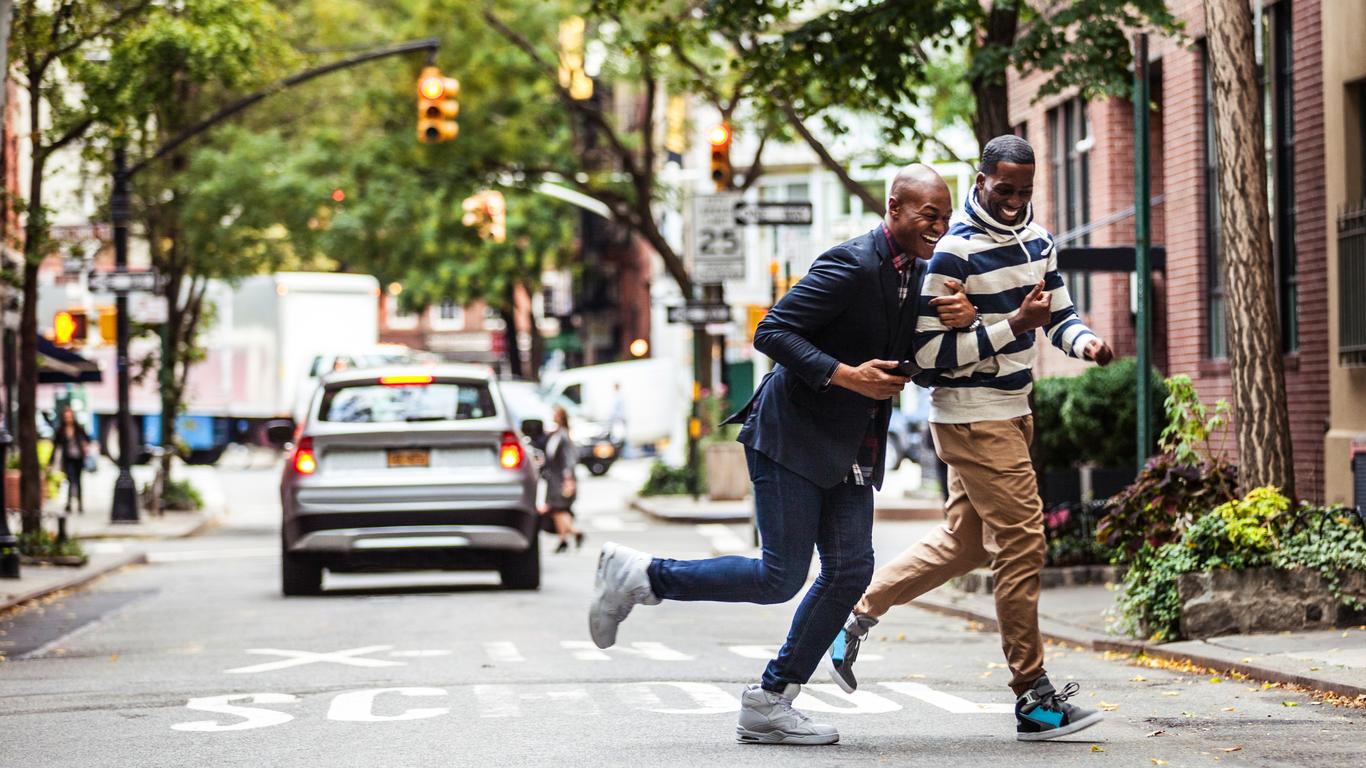
Find cheap flights from Haiti to the United States from $132
This is the cheapest one-way flight price found by a kayak user in the last 72 hours by searching for a flight from haiti to the united states departing on 6/12. fares are subject to change and may not be available on all flights or dates of travel. click the price to replicate the search for this deal., search hundreds of travel sites at once for deals on flights to the united states.
Save 22% or more Compare multiple travel sites with one search.
Track prices Not ready to book? Create a price alert for when prices drop.
Free to use There are no hidden charges or fees.
Filter your deals Choose cabin class, free Wi-Fi and more.
Good to know
Faqs for booking flights from haiti to the united states, how does kayak find such low prices on flights from haiti to the united states.
KAYAK is a travel search engine. That means we look across the web to find the best prices we can find for our users. With over 2 billion flight queries processed yearly, we are able to display a variety of prices and options on flights from Haiti to the United States.
How does KAYAK's flight Price Forecast tool help me choose the right time to buy my flight ticket from Haiti to the United States?
KAYAK’s flight Price Forecast tool uses historical data to determine whether the price for a flight to the United States from Haiti is likely to change within 7 days, so travelers know whether to wait or book now.
What is the Hacker Fare option on flights from Haiti to the United States?
Hacker Fares allow you to combine one-way tickets in order to save you money over a traditional round-trip ticket. You could then fly to the United States with an airline and back to Haiti with another airline.
What is KAYAK's "flexible dates" feature and why should I care when looking for a flight from Haiti to the United States?
Sometimes travel dates aren't set in stone. If your preferred travel dates have some wiggle room, flexible dates will show you all the options when flying to the United States from Haiti up to 3 days before/after your preferred dates. You can then pick the flights that suit you best.
Top 4 airlines serving from Haiti to the United States
Terrible. Flight was cancelled due to the weather in the east and sout east(florida). Did not get any compesation of any kind. According to them, it was not under their control so I lost all the money paid for the 2 fairs from Raleigh, NC to Orlando, Fl.
great flight. Pilot was communicative, flight attendants were excellent. Really nice experience except my tv didn’t work.
The best experience that I have had traveling with JetBlue!
Overall, the flight was better than the flight I took to go to Florida, which had a bunch of problems. The crew is really nice and the plane was new so it had a small problem when we were on the runway, but the flight itself was great. They even made some time back up, which is always a good thing.
Crew was just ok. Flight was packed. On a 3/4 hour flight I would hope they would come around more than once to see if you needed anything further. Not very attentive.
There were multiple delays but JetBlue tried to make the boarding and departure process as quick and efficient as possible. The crew was as detached from reality as could be, meaning: not very friendly and just doing things by the numbers.
Nothing. Jet Blue is a great choice for me And I’m going to miss flying with them Since I travel to Lima Peru very often 😞😞😞
I had back trouble prior to my flight and everyone was great about helping me.
40 minute delay before take off after boarding flight. Bright lights throughout night flight due Issues with light panels. In flight Entertainment nonfunctional
After 14 hour delaybwith departure time changed 9 times then announcing the flight was canceled. Another later announcement said the cancelation was in error. Also after paying a higher fare to leave in the afternoon then departing at 4am was not right.
Comfort of seats, ease of boarding. Food selection could be better
i suspect i caught flu on this flight as i could hear someone coughing a few rows back and ended up with flu a few days later. also tiresome to have to watch movies on my device by holding up smartphone screen, would have liked to have in seat display.
Flight was fine. It took an unusually long time to have baggage delivered to the carousel in ORD.
No problems with flight. Even though I had a short layover in DFW, I was still able to easily make my connection.
American Airlines continues to price it can provide the least comfortable passenger experience in the air. This legacy carrier rivals the budgets for both terrible seats and inadequate amenities. I am a 5’7” woman who is not wider than a coach seat (even on these narrow bodied aircraft). My 3.5 hour flight was terribly uncomfortable because the leg room is inadequate (my knees hit the seat on front of me even when it was not reclined); the seat barely reclines; and the foam padding is worn thin to the extent one can feel the metal supports of the seat. Add to this the fact that the aisle is super narrow, so that the drink cart literally scrapes the arm rest of the aisle seat. It’s basically torture.
Somehow I got “offloaded” even though I had my boarding pass and was in transit Food is horrible Staff were nice and cheerful No headphones were provided on 11 hours flight
Food options were limited which is absolutely embarrassing for a Flight of this size The staff did not come around as much and I am not accustomed to such poor service from American Airlines Drinks I believe were limited to soda and water
Plane took off without me, my stepdad and a dozen other passengers. It went from an hour delay to boarding in 15 montures without notifying anyone. Names were not called overhead. Now I’m missing a day of work and stuck in Charolette overnight paying for a hotel and Ubers out of pocket
I arrived to the airport 2 hours before my American Airlines flight was scheduled to take off. I have TSA pre-check. The airport was crazy packed when I arrived. After momentarily standing in the pre-check line, the TSA agent said that I am not pre-check. Of course I said that I am because I entered my KTN number on all my traveling sites and programs. I had to get out of line and go back to the AA counter to discover that American Airlines did not add my KTN to my boarding pass. I had to call TSA to find out my number, then have AA enter it onto my boarding pass. The emblem would not load onto my boarding pass. By this time, I decided to use my Clear in order to get through TSA but the line was ridiculous long. By the time I made through TSA, I missed my 11:08am flight and was re-booked for the 5:30pm. This is after the AA employee told me I should have gotten to the airport early. AA use to be a dependable airline not I use them only if I have too.
The only poor experience was the flight the day before was canceled. I have flown enough to change as soon as notified. That was a huge plus for AA. Obviously I paid out of pocket for a hotel. Not AA choice , it was mine. I had resources. Other friends on the same flight were more affected. I know everyone is doing their best and the ability to change my flight was a good move AA.😀
They charged me 212.00 for a heavy check in bag at the gate. The pricing and process was so confusing - as if it was designed to purposefully gouge customers who need to board plane. That experience combined with the outrageous price charged will prevent me from ever flying Spirit again. And I’ll be sure to tell the story to anyone who cares to hear.
On time and fast. Overall it was a pleasant experience.
The weight limit per bag was really low - 40 lbs - so we had to pay extra. Then, they said their carry on size was 14x18x8, and we measured our bag very carefully. It was within the limit, yet they said it was too big, so we ended up paying an extra $100 for that too!! So it wasn’t the cheap flight we thought it would be. Then, they moved up our initial flight to depart 3 hours earlier which meant we had to be out on the road by 7 am and then have a 6 hour layover and we got home at 2am. It was a grueling day. I won’t be flying with them again.
Overall it was a good experience. Stewards were very kind and professional. The departure and arrival times were as promised. Plane was clean.
The seat are terrible. Don’t even think of sleeping on a Spirit flight. The kids that run the plane aka flight attendants are pretty rude and straight forward. They get the job done but without class.
No frills, limited comfort, no food, no entertainment, but fine
I had a death in my family and booked my flight on Spirit. My flight was cancelled the morning of my flight, no explanation, no help to rebook, nobody to talk to. The next available flight was 2days later !!!! Terrible airline, will NEVER fly with them again!
Flight was canceled. Knew there was weather, and were notified of 20 min delayed, and then suddenly canceled. Next reschedule was for 2 days. No help other than to refund. Thankfully full refund and appreciate that. I appreciate discounted airline but felt they could've done more for customer inconvenience.
The seat was very uncomfortable from Boston to Nashville. Otherwise the flight was excellent.
Terrible as usual!!!! Very unprofessional and rude flight attendants! You get what you pay for! HORRIBLE
They find a way to Nickel and dime you in all creative ways. The boarding crew seems to have target collection amount. If you are flying internationally, avoid them at all costs.
Book cheap flights from Haiti to the United States
Recent round-trip flight deals, search by stops, search by airline, search by price, recent one-way flight deals, last minute flights to the united states, last minute flight, train and bus deals, flights to the united states, return flight deals:.
United States - Haiti
Cabin classes:
Browse origins:.
- Flights »
- Worldwide »
- Caribbean »
Browse destinations:
- United States
- Login Sign in
- [email protected]

Goeland Voyages

- Description
- Additional Information
Une agence fiable
Nous vous offrons le monde
Les meilleurs prix
Vous pouvez passer à nos bureaux pour acheter vos billets. Vous pouvez aussi nous contacter par téléphone pour obtenir une quotation.
Un souci en moins
Goeland Voyages se charge aussi, si vous le souhaitez: - de l'émission et du renouvellement de votre passeport auprès de la Direction de l'Immigration et de l'Emigration. - des formalités pour l'obtention et le renouvellement de votre visa - de la préparation de votre croisière de A à Z.
Réservation d'Hôtel
Avant votre départ, vous pouvez réserver votre chambre d'hôtel. Nous pouvons vous trouver l'hôtel qui vous convient, au lieu qui vous convient et au prix qui vous convient.
Partenaires
Business Category
Business location.

Real Estate in Haiti

Beautiful Chalet for Sale in Furcy, Kenscoff

43 Centièmes de Terre à Vendre Cyvadier, Jacmel

Beachfront Land for Sale at Grand-Goâve, Léogâne

Appartement de Luxe à Louer Bourdon

5 Bed, 4.5 Bath Home for Rent at Peguy-Ville

2 Bed, 2 Bath Apartments with Pool at Morne Calvaire

Fully furnished all inclusive apartments at Morne Calvaire
Related businesses.

Sans-Souci Agence…

Agence Alpha…
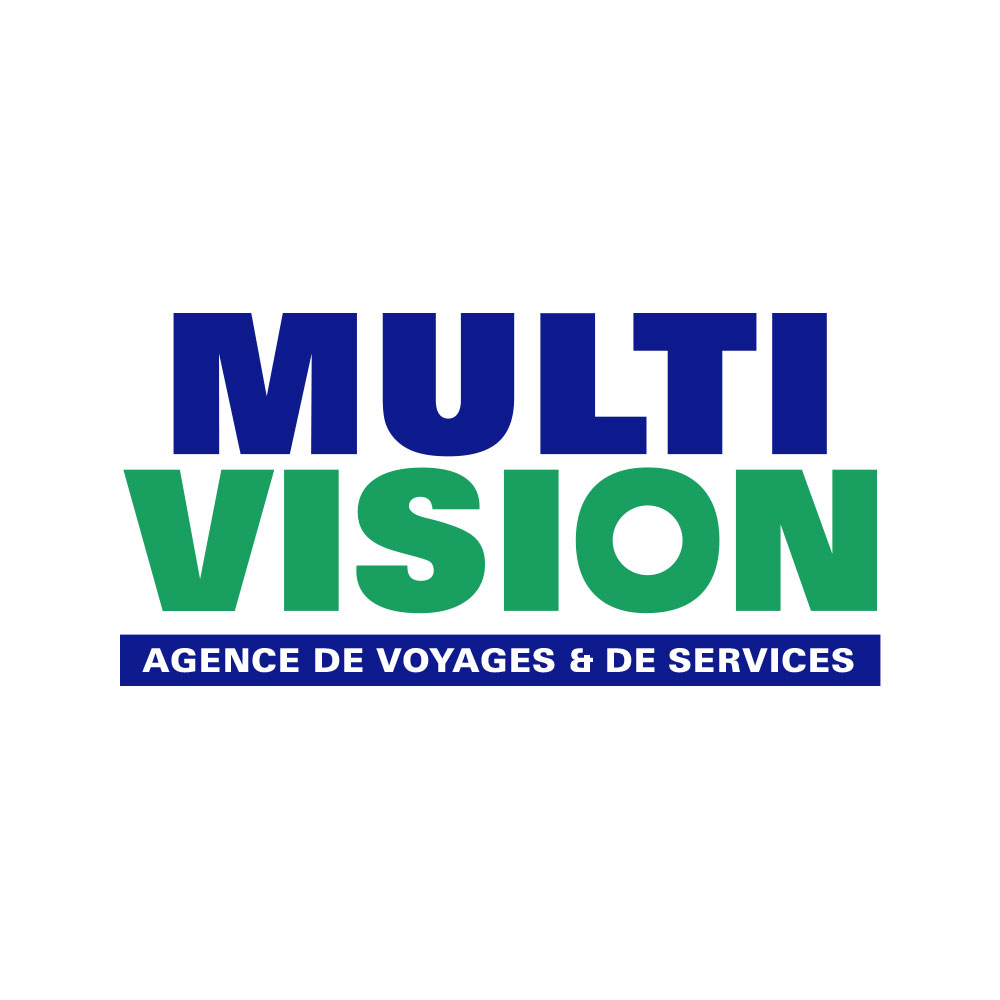
Multi Vision…

Harmony Tours…
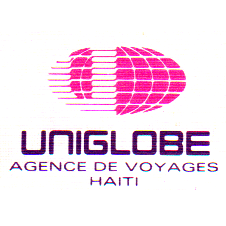
Uniglobe Agence…

Agence Sans…

Agence Citadelle…
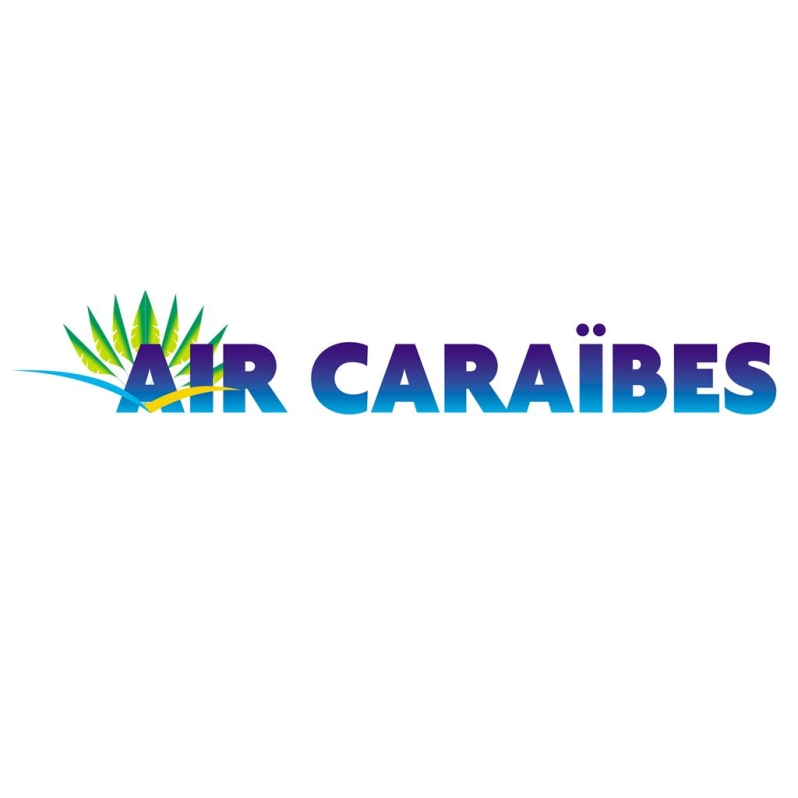
Agence Air…

Cap Travel…
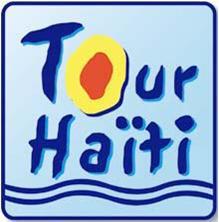
Tour Haiti…
Napolitano travel….
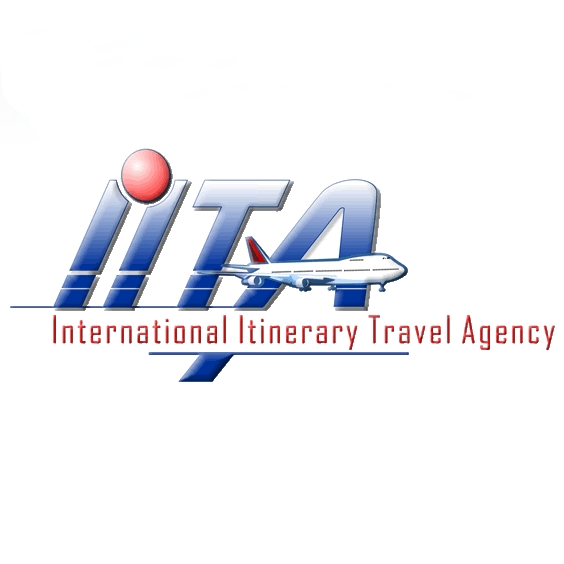
International Itinerary…
Constellation voyages, monair tours….

Transat Holidays…
Voyages plus….

Belle Vue…
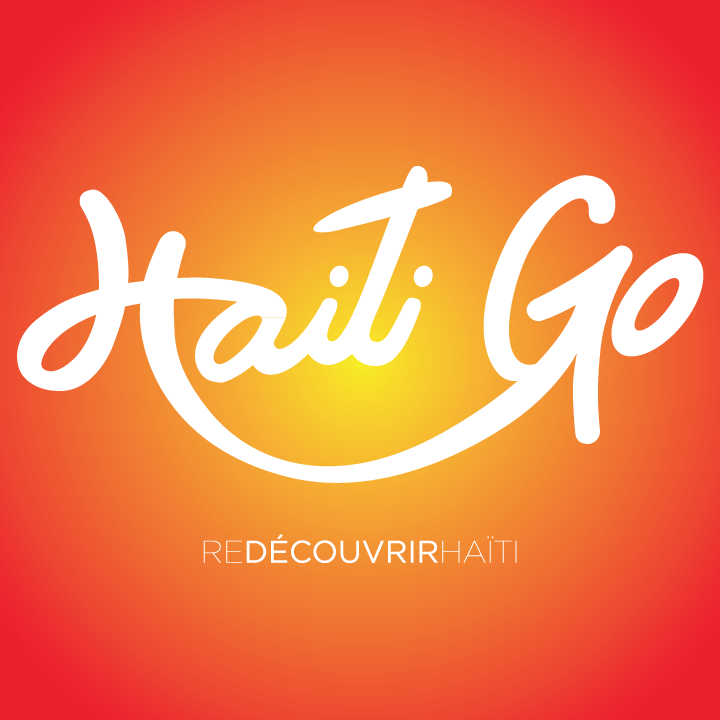
Les Tours…
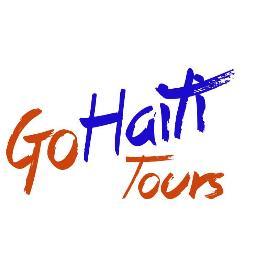
Go Haiti…
Agence martine, voyages lumiere, quisqueya tours…, francheco agence….
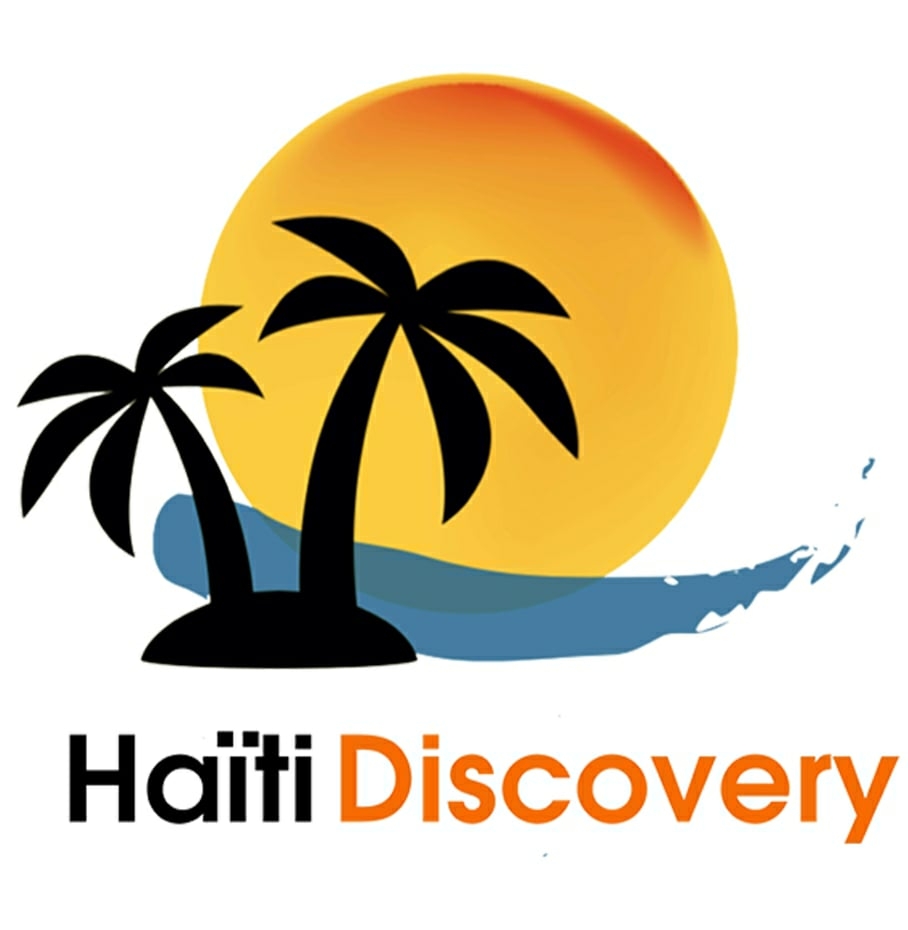
Haiti Discovery
Virgio travel, inter caraïbes…, pegase services.

Terra Bus…

Colibri Helicopter…

Flash Haiti
Subscribe For Latest Offers
Subscribe to our newsletter to get important news, amazing offers & inside scoops:.

IMAGES
VIDEO
COMMENTS
Haiti (Haitian Creole: Ayiti, French: ... outdoor markets are great fun and very worth doing but are much safer and easier if you have a trusted Haitian to go along as a guide and interpreter. Much of Haiti is struggling. It is the poorest country in the Western hemisphere, long beset by government corruption, and now imperiled by violent ...
A notable exception applies to nationals from the Dominican Republic, Panama, Colombia, Cuba, Syria, Libya, Vietnam, or Yemen, who must obtain a visa beforehand. Importantly, upon arrival in Haiti, all tourists are required to pay an entry fee of $10 USD. Please note, this fee must be paid in cash at the airport as credit cards are not accepted.
Haïti : envie de visiter ce pays ? Profitez des meilleures offres de vols pas cher proposées par GO Voyages et réservez votre billet d'avion !
Get a VPN for traveling in Haiti. You should always use a VPN when you travel, especially when you connect to public Wi-Fi networks. Your connection will be much safer. Moreover, you will be able to access content which is typically censored in Kazakhstan. I recommend ExpressVPN - Extremely easy to use, fast and cheap.
Established in 1946, Agence Citadelle's focus is to provide the best services available to travelers from Haiti to the rest of world and from the rest of the world to Haiti. With a team of qualified staff members using the latest available equipment, Agence Citadelle wants to satisfy and even go beyond the expectations of customers and suppliers.
Adventure awaits. Exploring hidden waterfalls in Jacmel, meandering through the March de Fer in Port-au-Prince and trekking up to the largest fortress in the western hemisphere, La Citadelle La Ferriere, Haiti has so much to offer the more adventurous traveller. Read more. Travellers exploring the Kaskad Pichon waterfalls, Haiti.
per adult. 10. Private 3-Day PAP La Gonave Island, Cotes des Arcadins From HAITI. Historical Tours. 3 days. This private tour of Port au Prince/Cotes des Arcadins, La Gonave Island sets off with pickup from the airport to your hotel…. Free cancellation. from. $750.
With Expedia's price and theme filters, finding a great deal for your all-inclusive vacation in Haiti is a breeze. Booking a package in Haiti for your all-inclusive vacation is the perfect idea. With live music, dancing, entertainment, cafes, art, dining, bars, a port, a university, and mountains, Haiti offers a diverse range of experiences.
Instead, focus on its many positives. Its two biggest attractions are the national museum, Musée du Panthéon National , also known as Mupanah, and the Marché de Fer. Mupanah holds items from Haiti's history, from the anchor of one of Christopher Columbus's flagships to memorabilia from Papa Doc Duvalier. The Marché de Fer (Iron Market) is a ...
Hugo Agence De Voyage, Port-au-Prince, Haiti. 23,201 likes · 115 talking about this · 131 were here. ***SERVICES OFFERTS*** - VOYAGE /BRESIL100% - VISA...
About. Est in1946, AGENCE CITADELLE is Haiti's oldest and largest full service IATA Travel Agency and Incoming Operator.As DMC, customized itineraries with multilingual guides for excursions are provided using company chauffeur driven vehicles such as SUV, , Minivan, Minibus, and Coach. Our brands names are: Airport Express, Haiti Chérie ...
According to Godefroy, most visitors to Haiti head to five areas: Port-au-Prince, Cote des Arcadins, Cap Haitien, the Kenscoff Mountains, and the town of Jacmel. That makes for an excitingly diverse array of things to do for travelers who don't mind stepping outside traditionally comfortable notions of travel.
Haiti - Avoid all travel. Avoid all travel to Haiti due to the threat posed by kidnappings, gang violence and the potential for civil unrest throughout the country. The security situation remains volatile in Haiti. You should consider leaving the country by commercial means if you can do so safely. Back to top.
Pensez à GO Voyages pour votre voyage en Haïti. Une fois votre réservation effectuée, nous vous accompagnons tout au long de votre séjour en Haïti en vous fournissant des informations pratiques sur votre vol au départ de Paris. GO Voyages propose également des services complémentaires comme les transferts aéroports depuis Paris ou ...
Prices were available within the past 7 days and start at $69 for one-way flights and $203 for round trip, for the period specified. Prices and availability are subject to change. Additional terms apply. Find cheap return or one-way flights to Haiti. Book & compare flight deals to Haiti and save now!
How does KAYAK find such low prices on flights from Haiti to the United States? KAYAK is a travel search engine. That means we look across the web to find the best prices we can find for our users. With over 2 billion flight queries processed yearly, we are able to display a variety of prices and options on flights from Haiti to the United States.
Central American Single Visa. The Central American Single Visa (Visa Única Centroamericana) is a visa for Guatemala, El Salvador, Honduras, and Nicaragua. It was implemented by the CA-4 agreement. It allows citizens of those four countries free access to other member countries.
Rome2Rio makes travelling from Haiti to Cuba easy. Rome2Rio is a door-to-door travel information and booking engine, helping you get to and from any location in the world. Find all the transport options for your trip from Haiti to Cuba right here. Rome2Rio displays up to date schedules, route maps, journey times and estimated fares from relevant transport operators, ensuring you can make an ...
Serving as a private cruise port for Royal Caribbean, Labadee is a stunningly beautiful beachfront resort with crystal clear waters, a range of water and land activities, and breathtaking views ...
Association Hôtelière d'Haïti (ATH) Email. [email protected]. Address. 10, Rue Darguin, Pétion-Ville. Phone. 509 2940-1387 ,509 2940-1388, Fax. Accueil Une agence fiable Agence agrée par l'IATA (International Air Transport Association), Goeland Voyages a plus de 15 ans d'expérience.
Haiti. Haitian citizens must obtain a visa before travelling to Belize. Belize Tourist visa is required for Haitian citizens. With this tourist visa stay is usually short with a period of 30 days. Applicant is required to be present when applying for Belize tourist visa. A total of 7 documents are required for applying Belize tourist visa.
Haiti. Haitian citizens must obtain a visa before travelling to Panama. Panama Tourist visa is required for Haitian citizens. With this tourist visa stay is usually short with a period of 30 days. Applicant is required to be present when applying for Panama tourist visa. A total of 8 documents are required for applying Panama tourist visa.
Restricted to travellers 21 years and over. One of the following: 400 cigarettes; 25 cigars; or. 500 grams of tobacco.